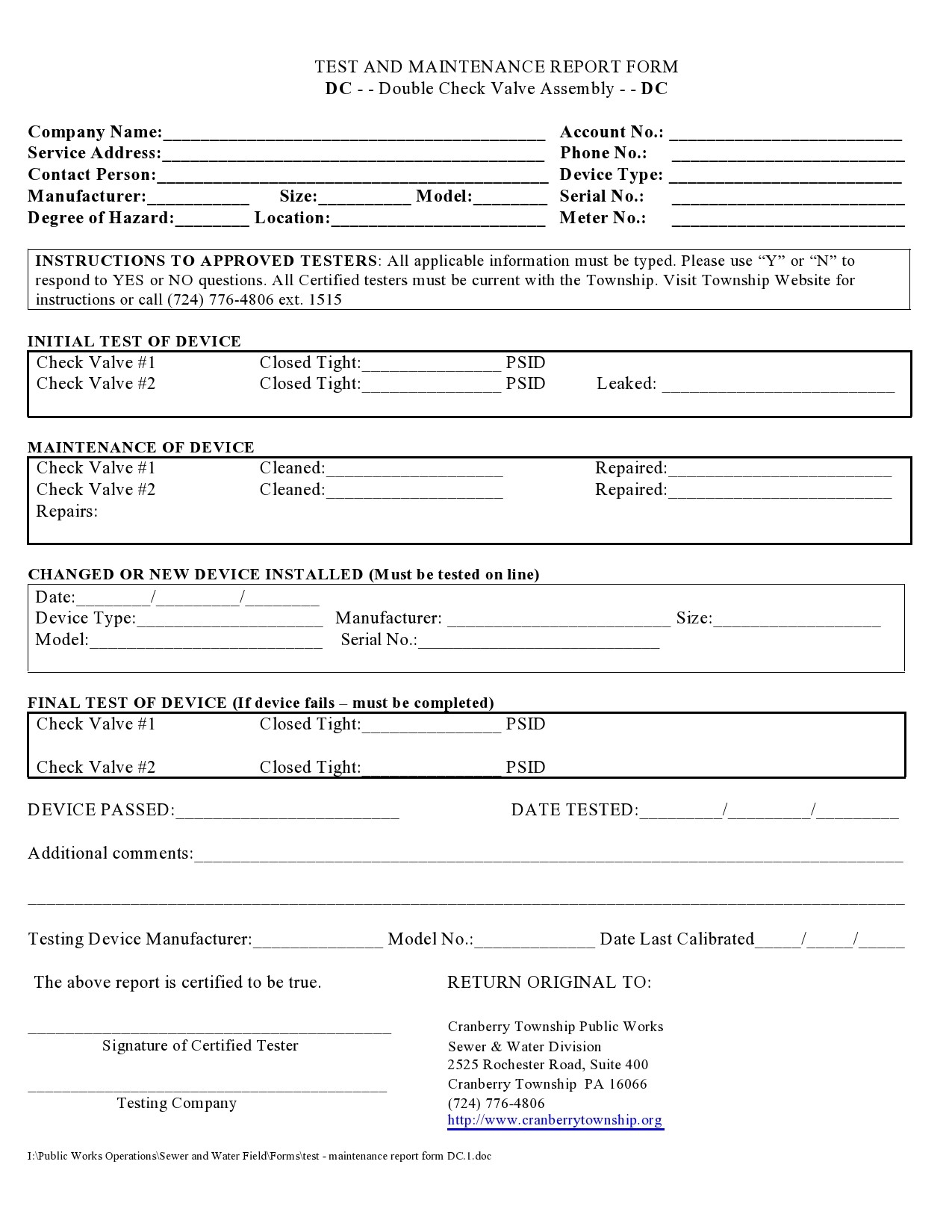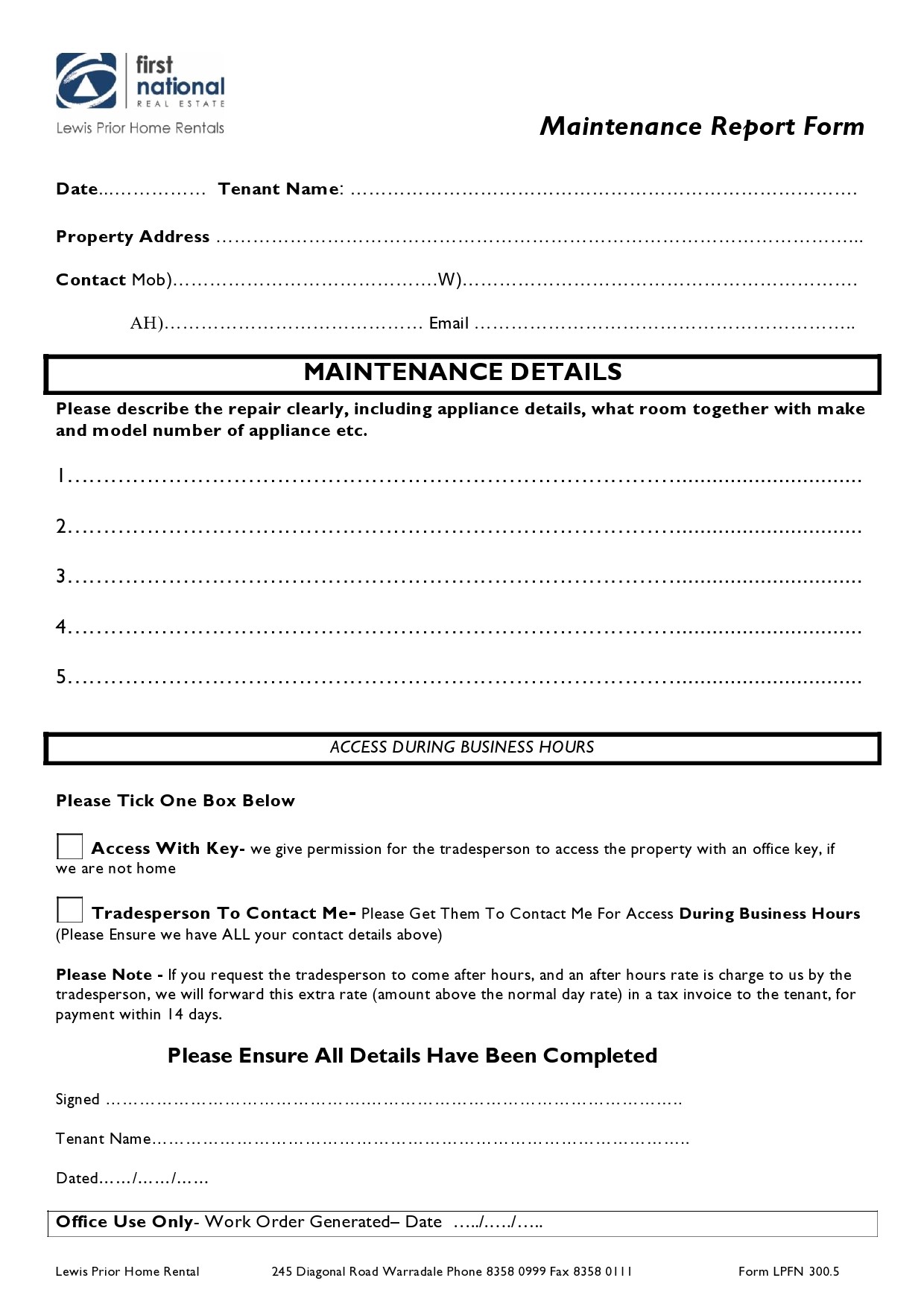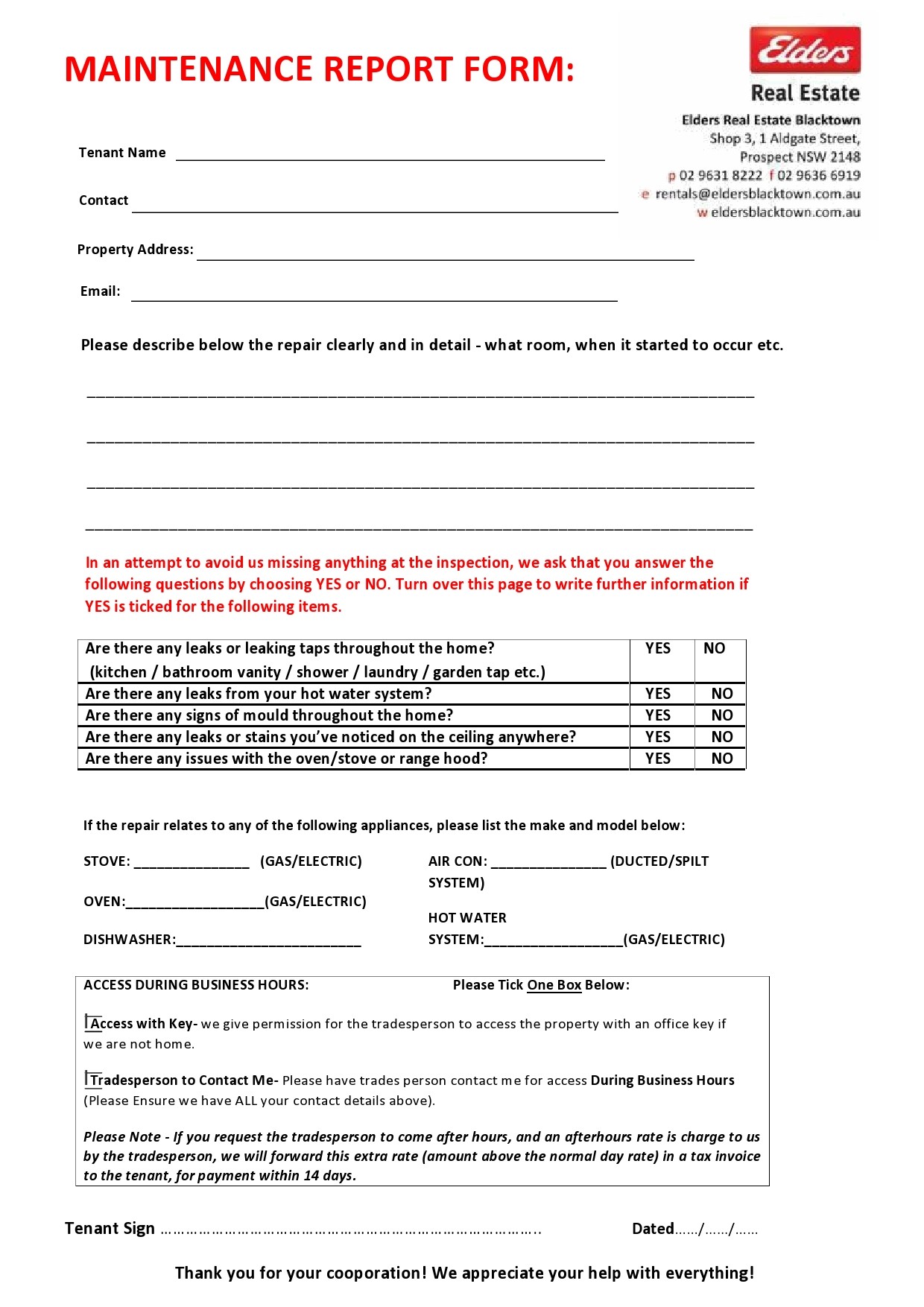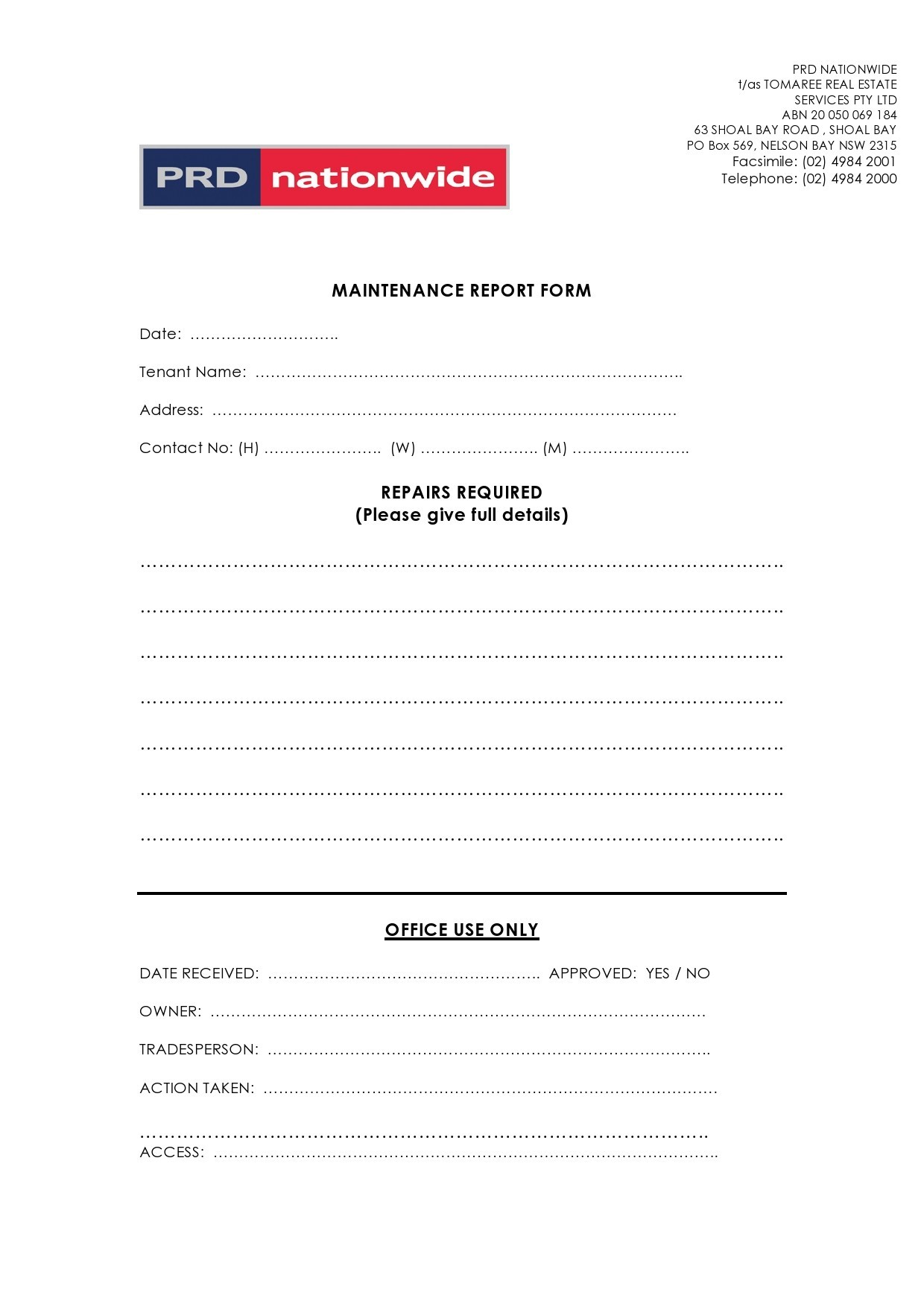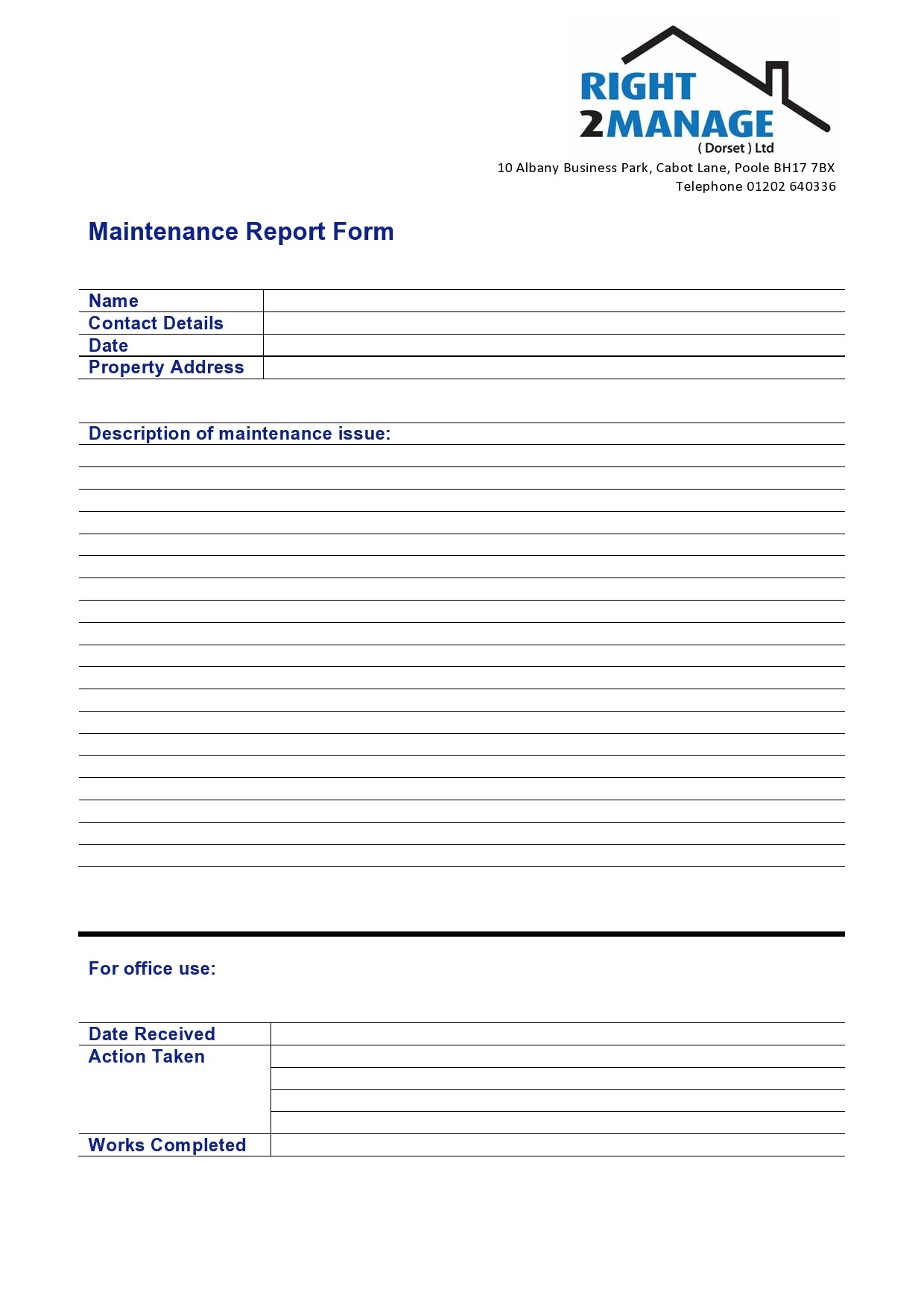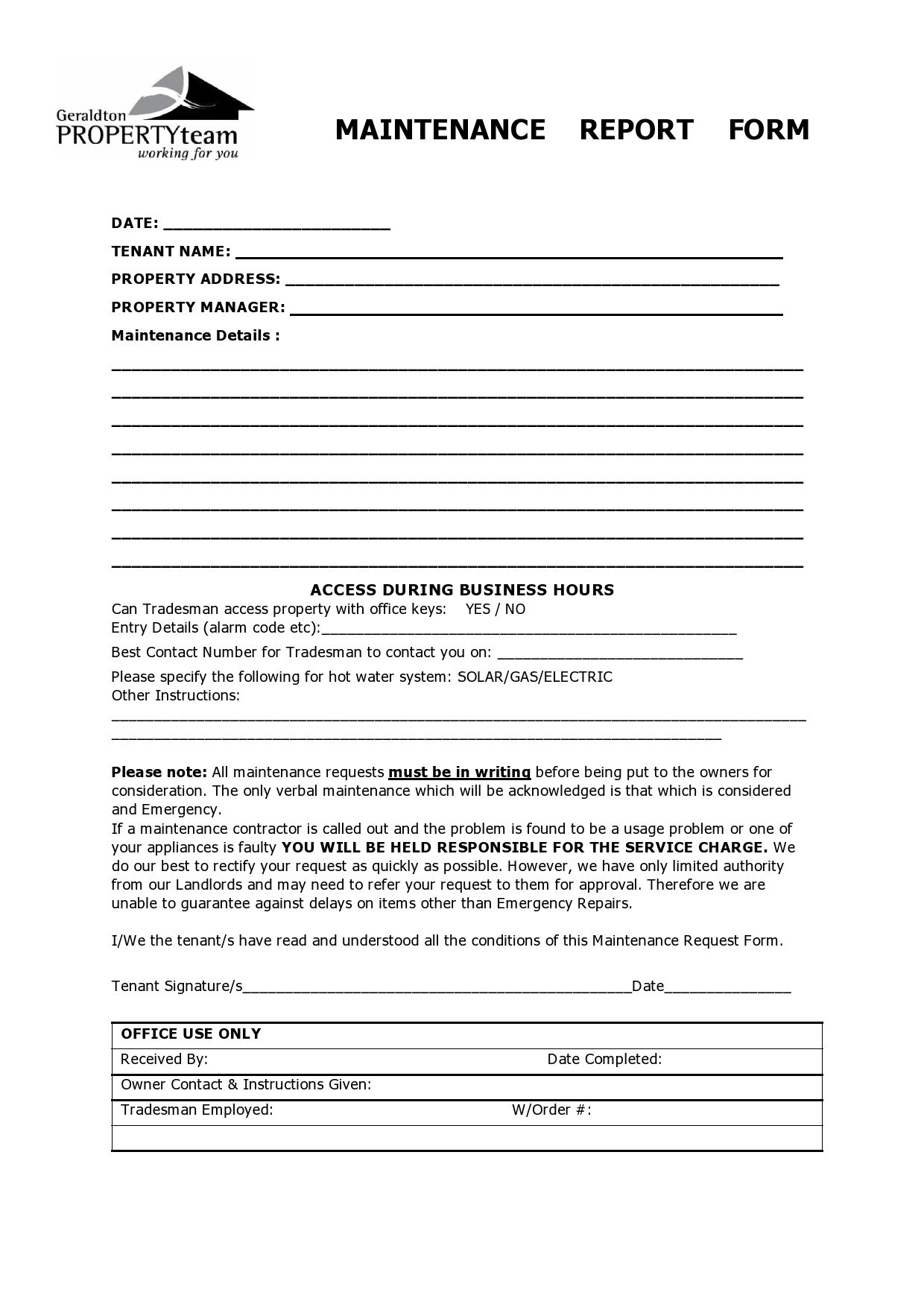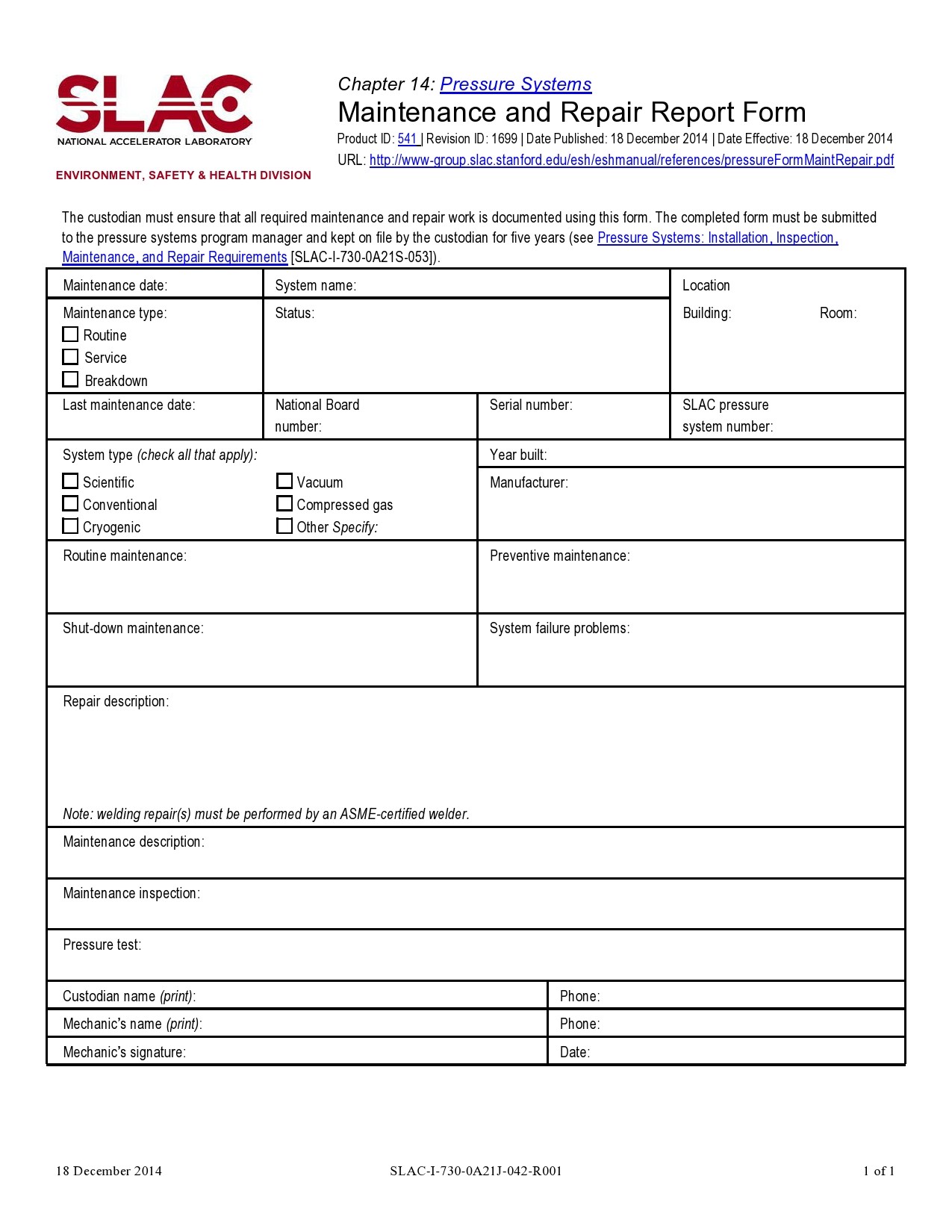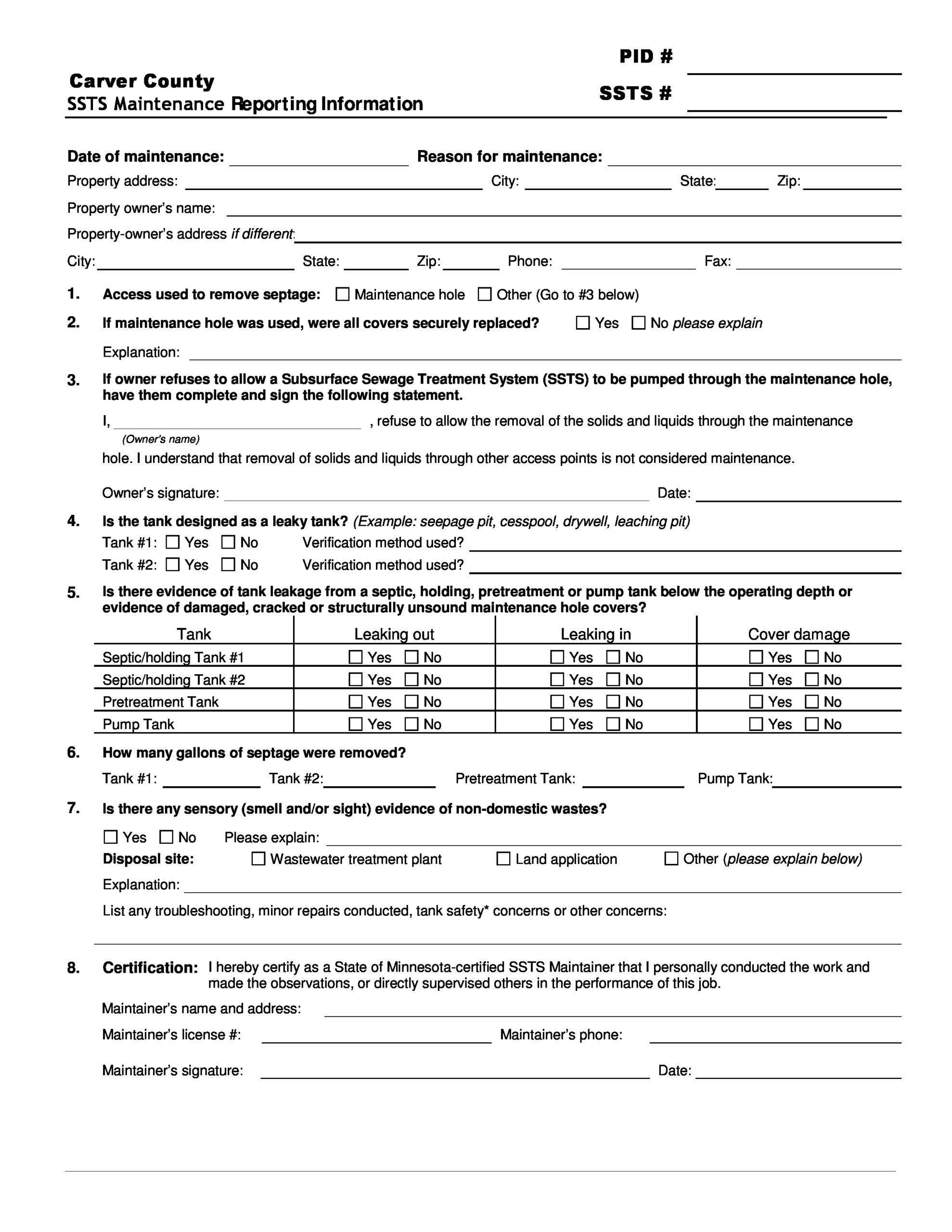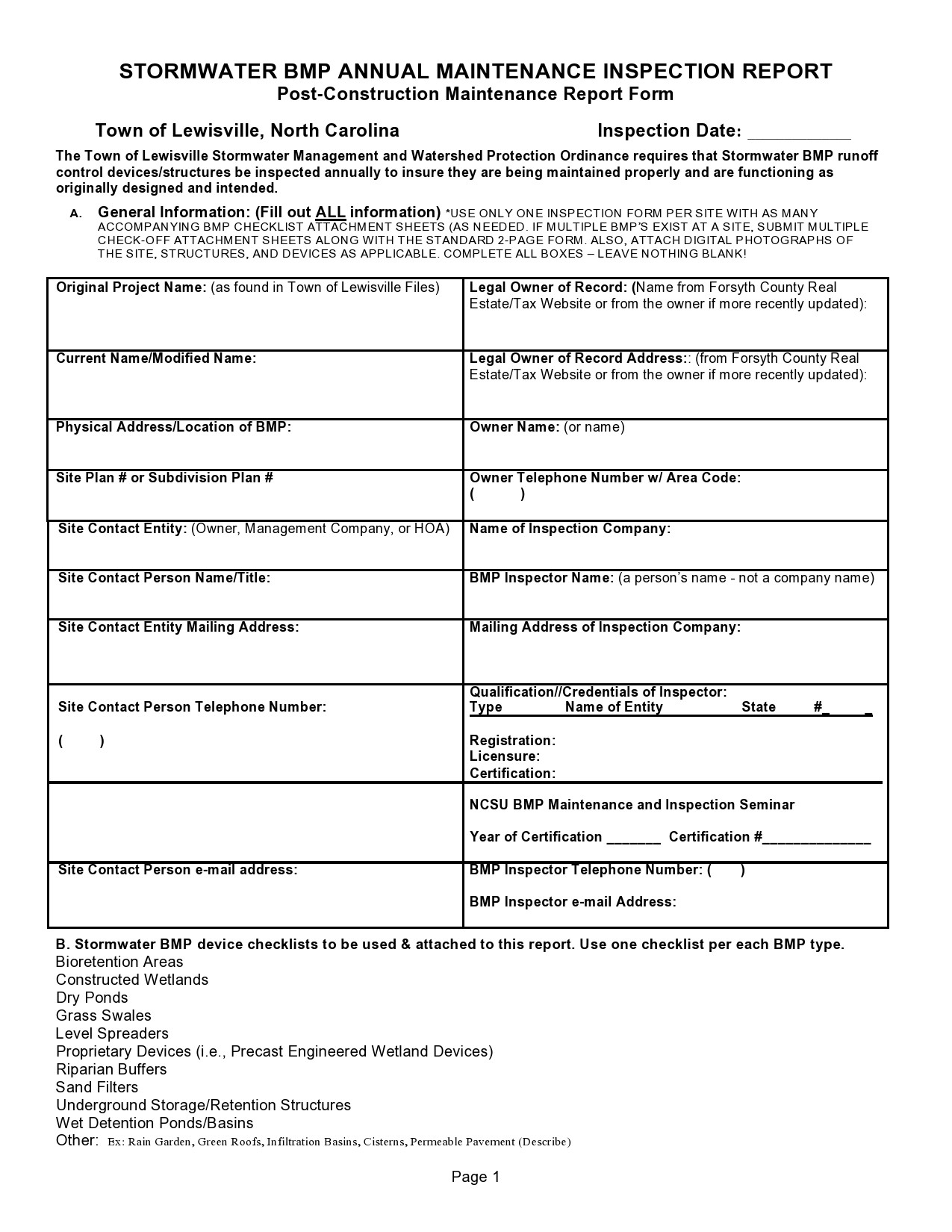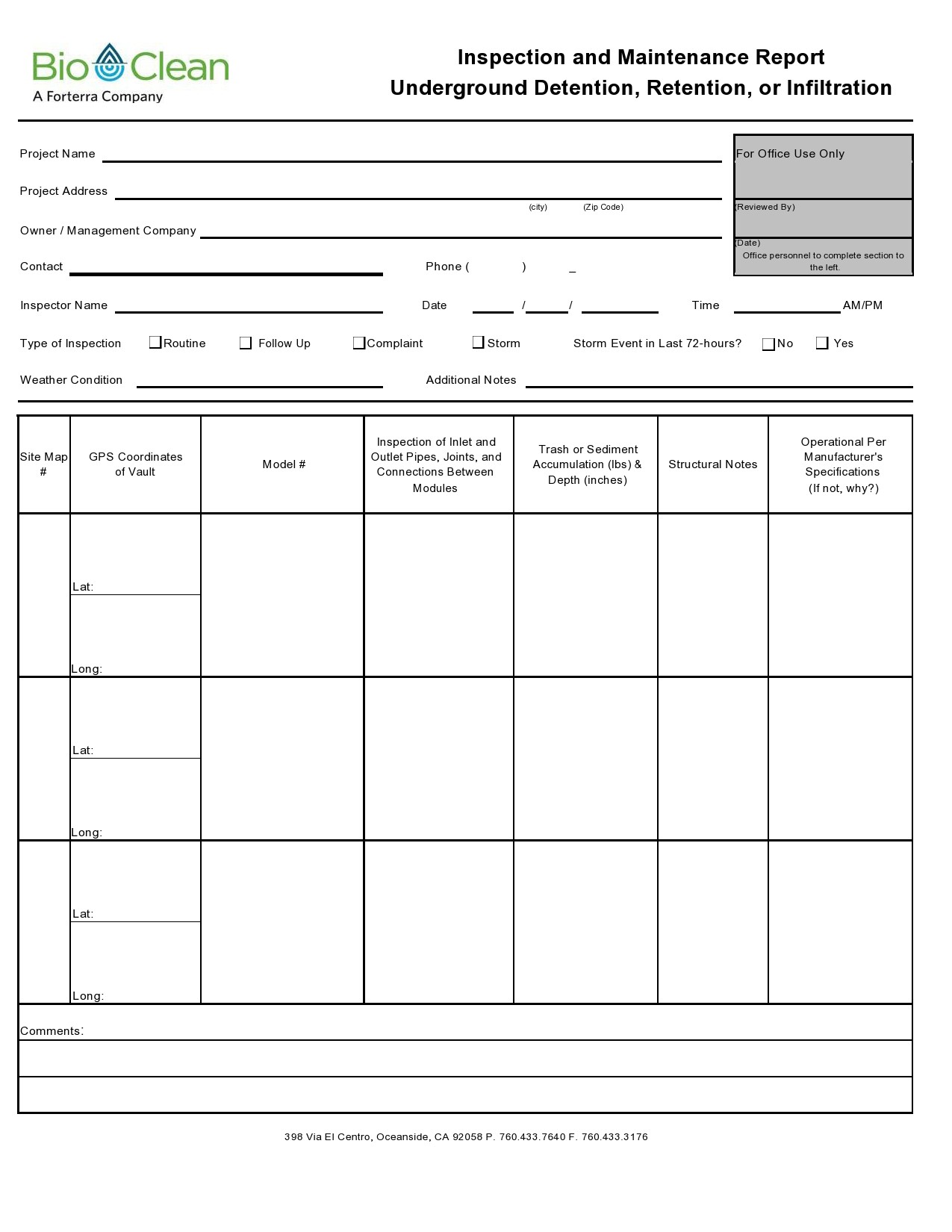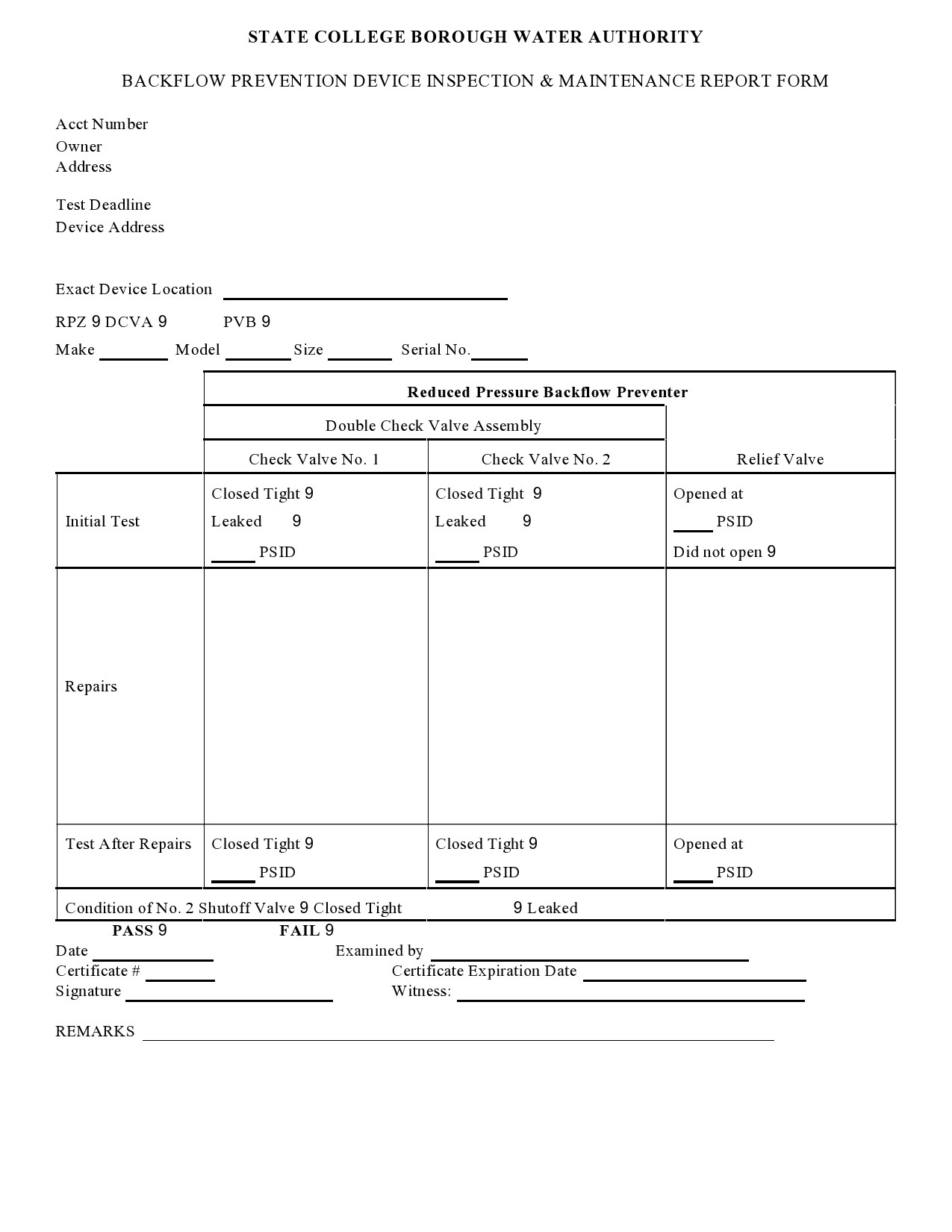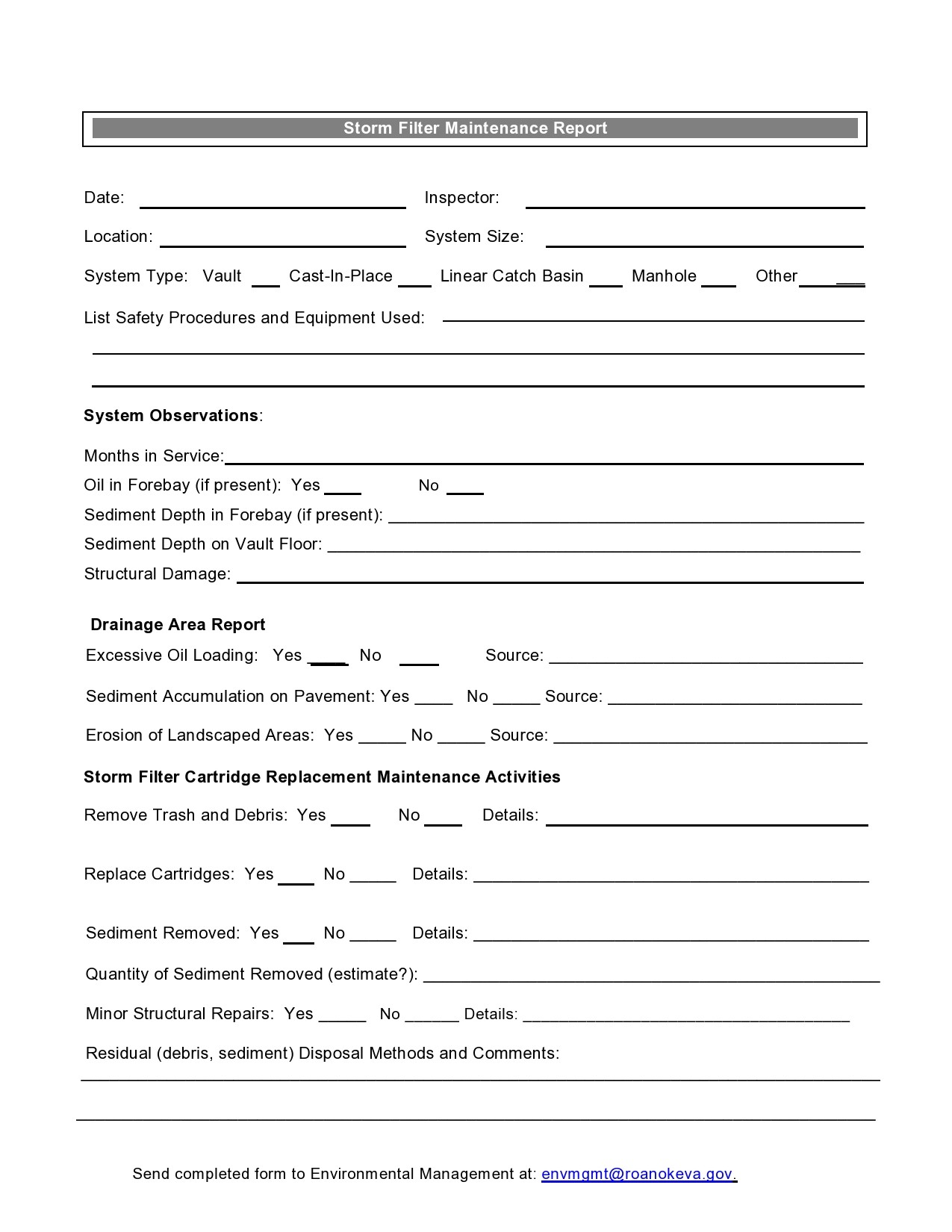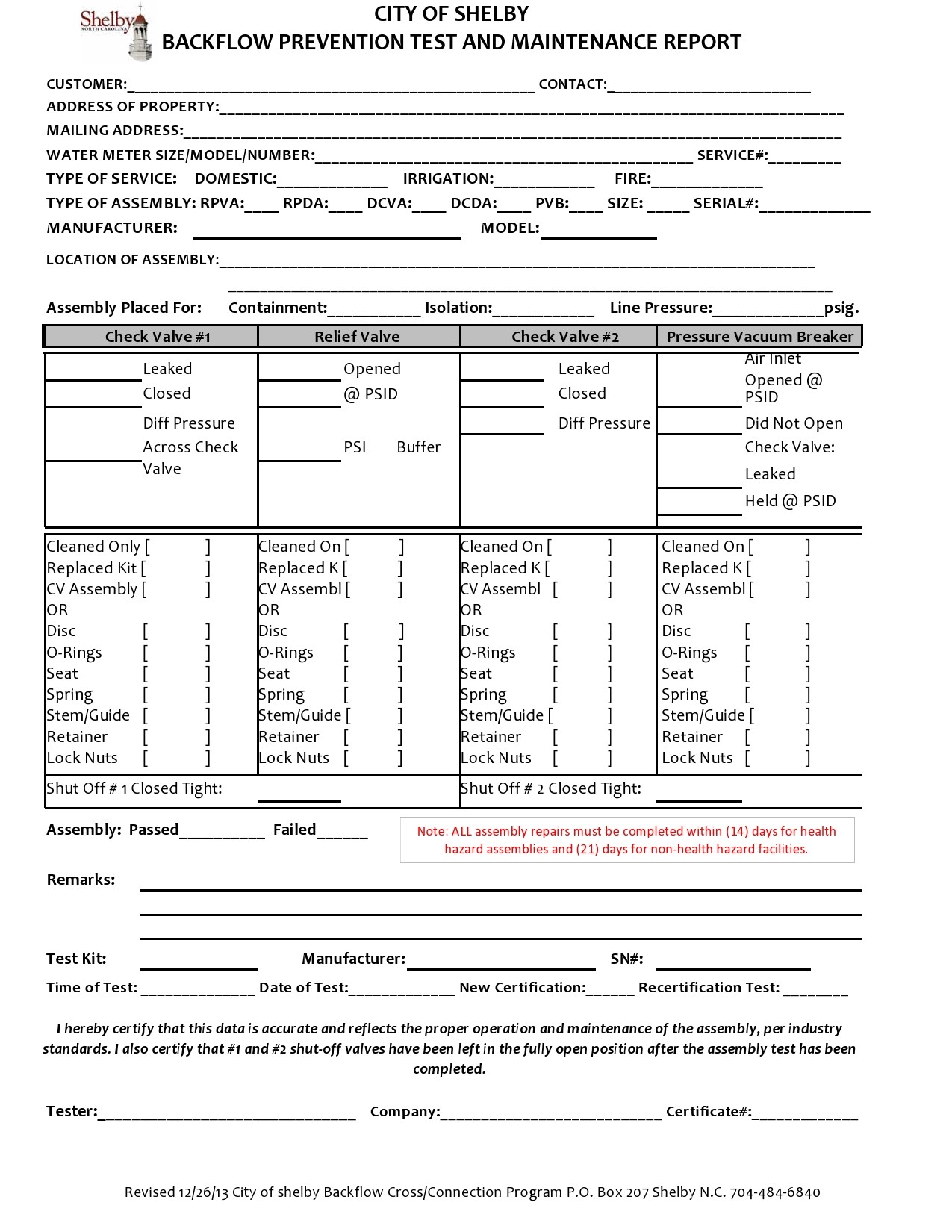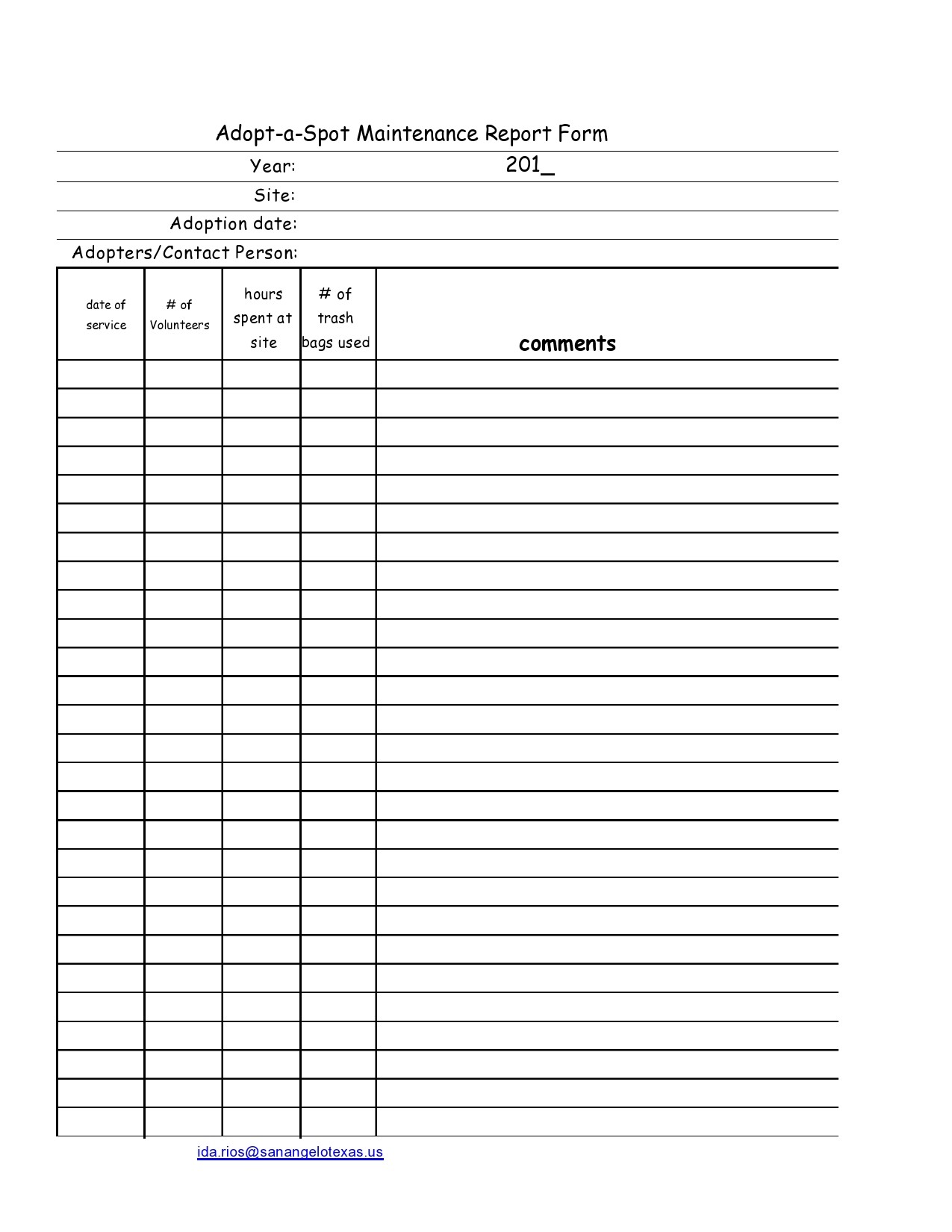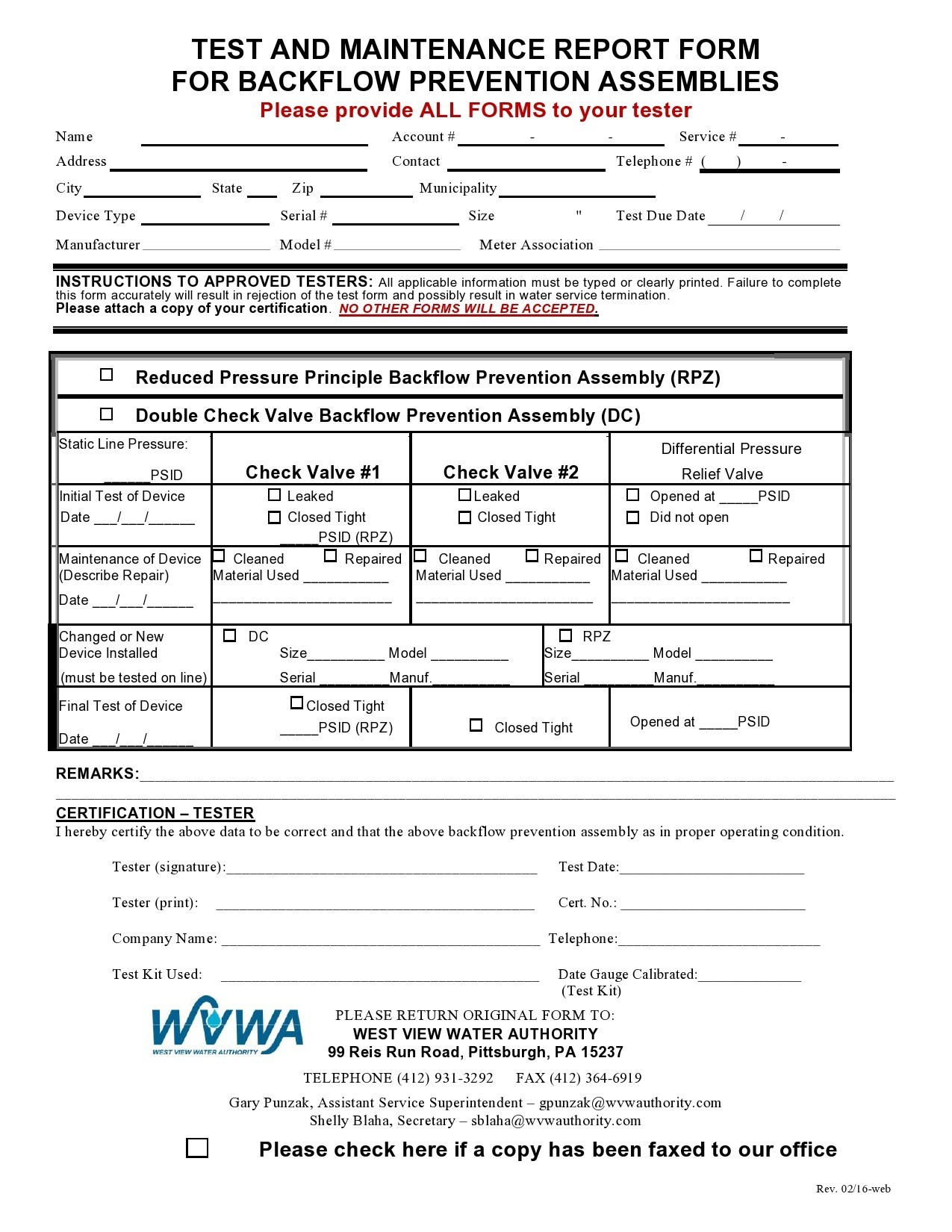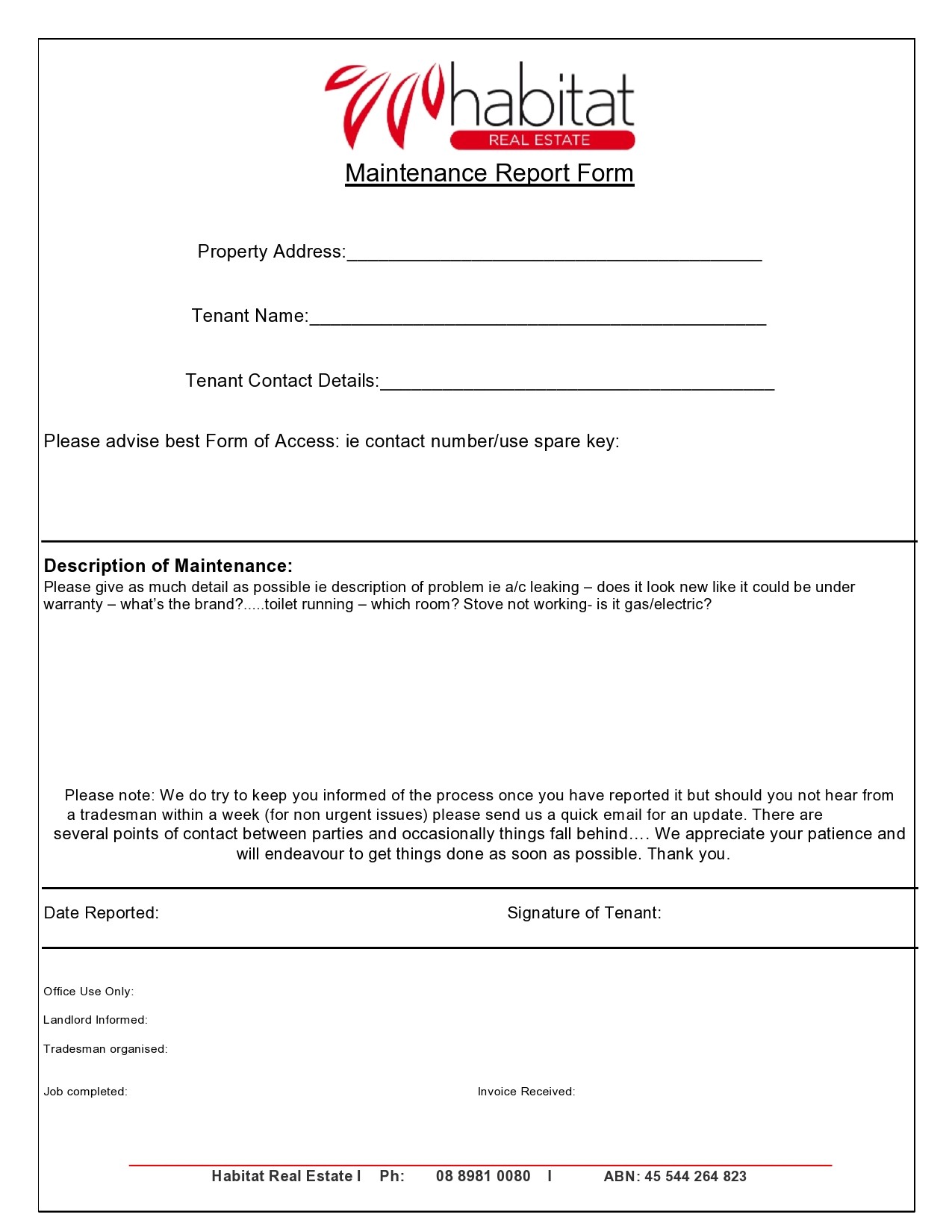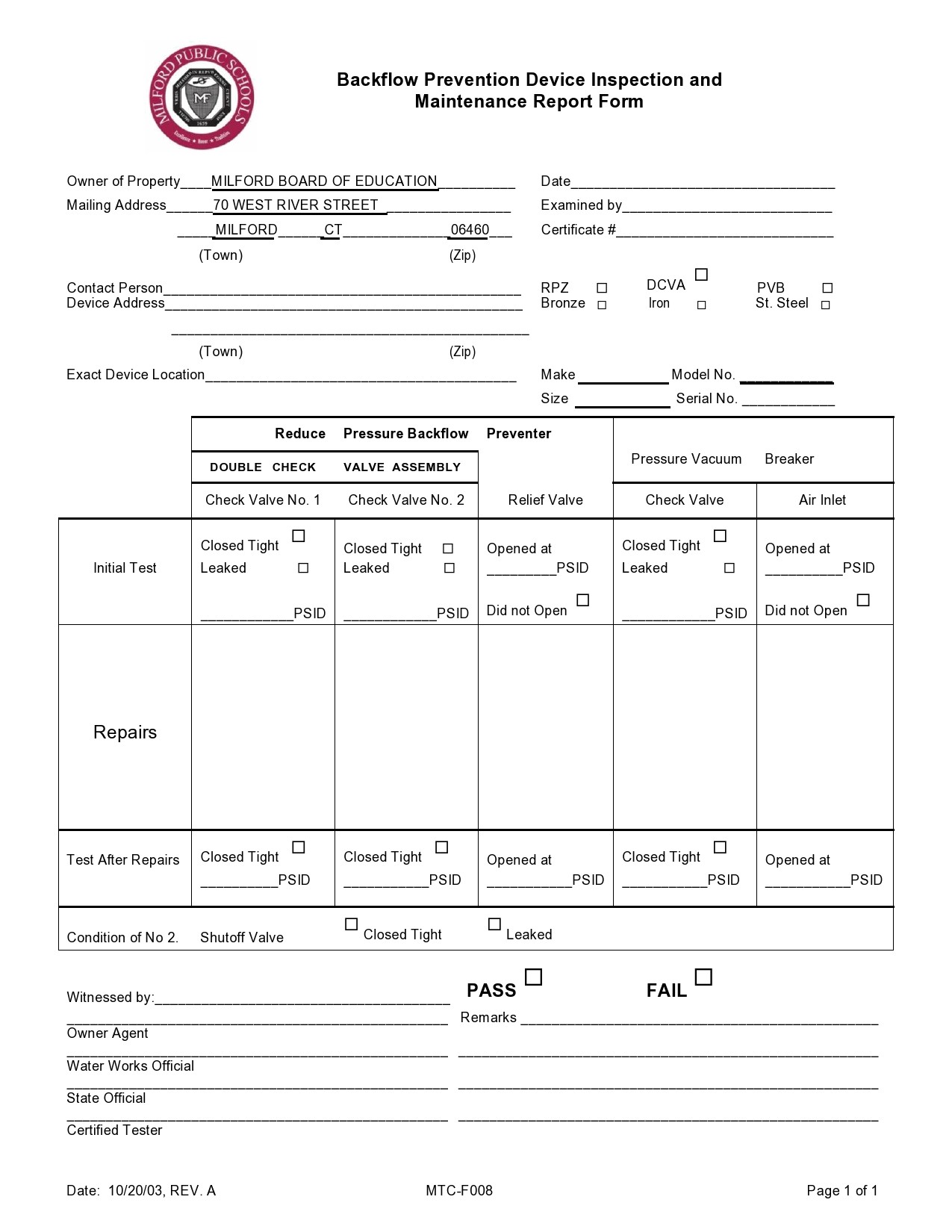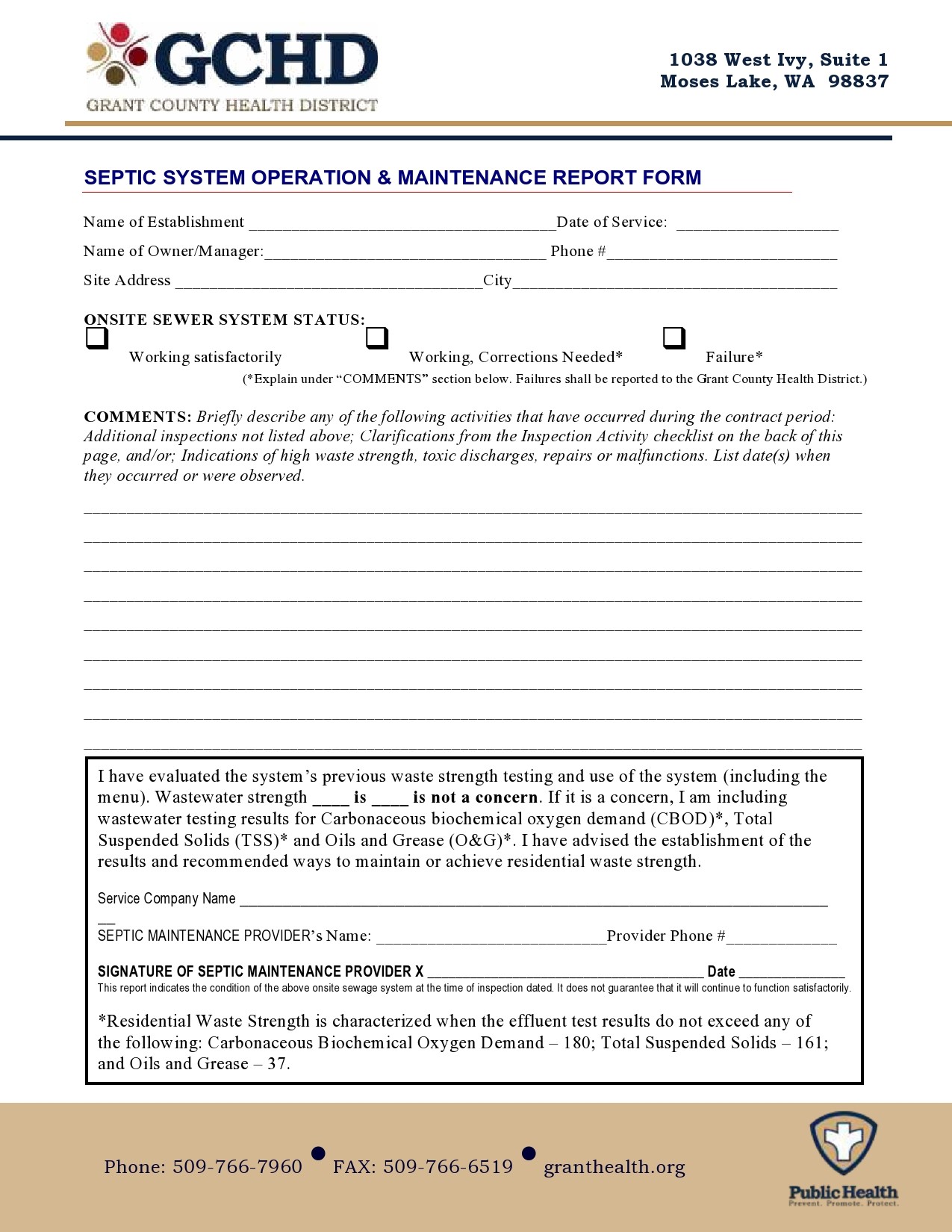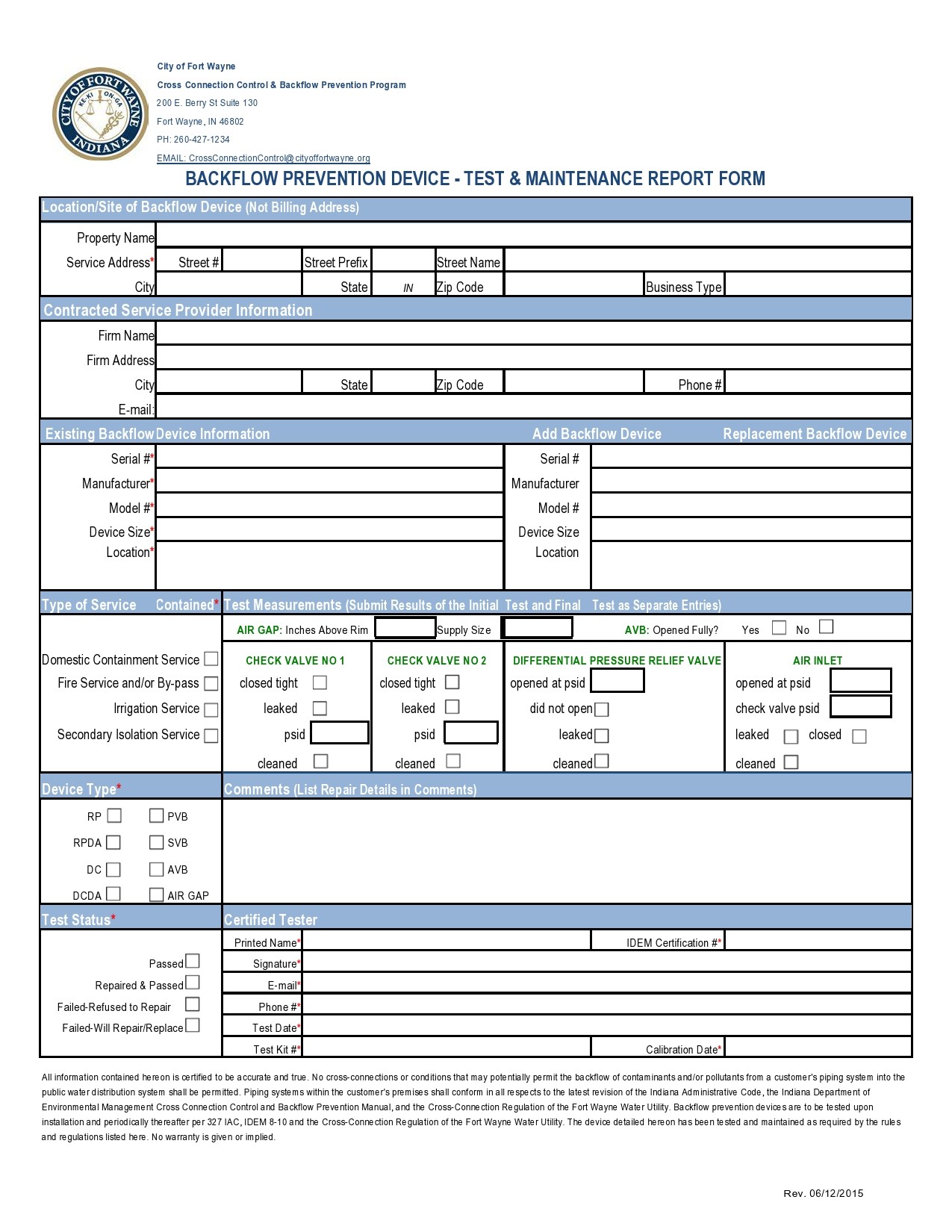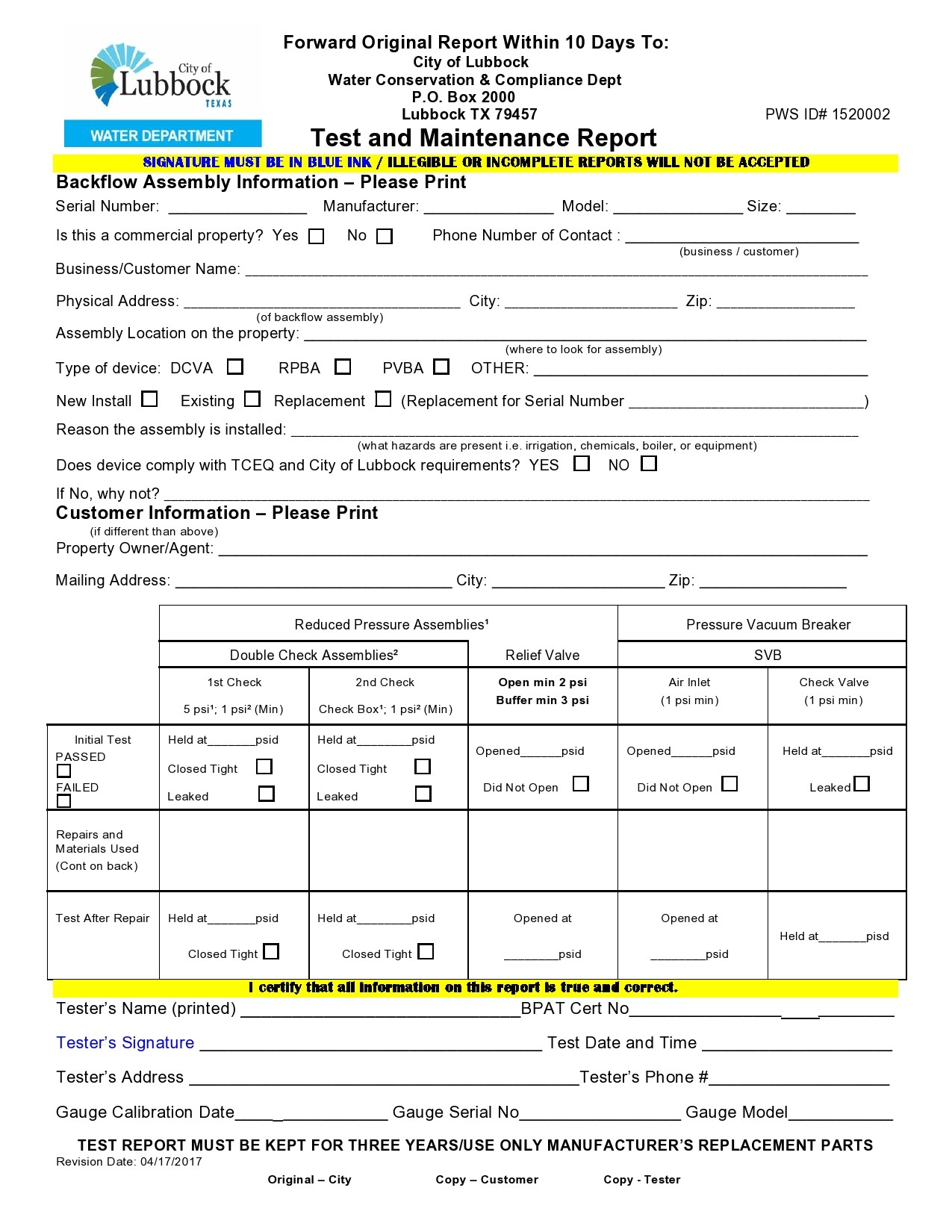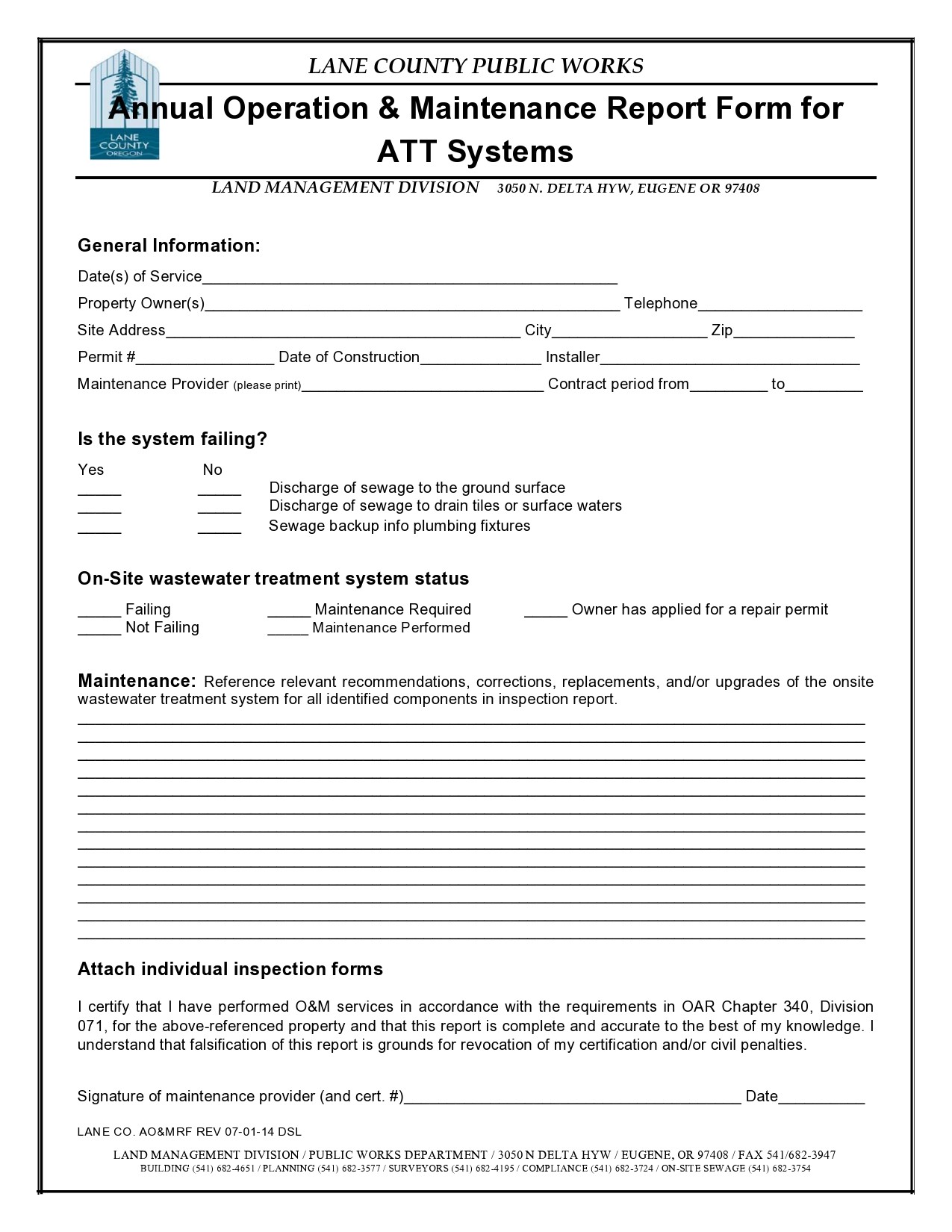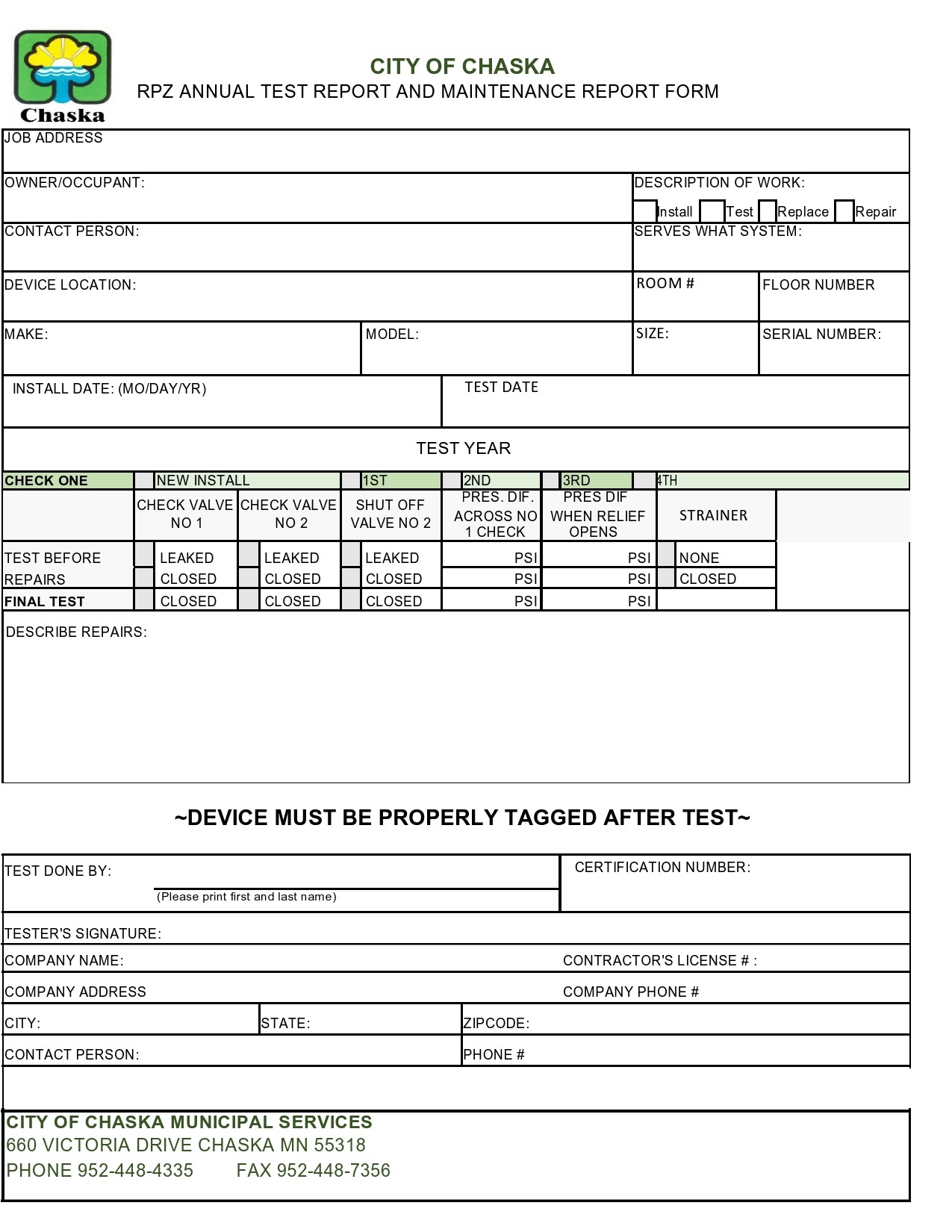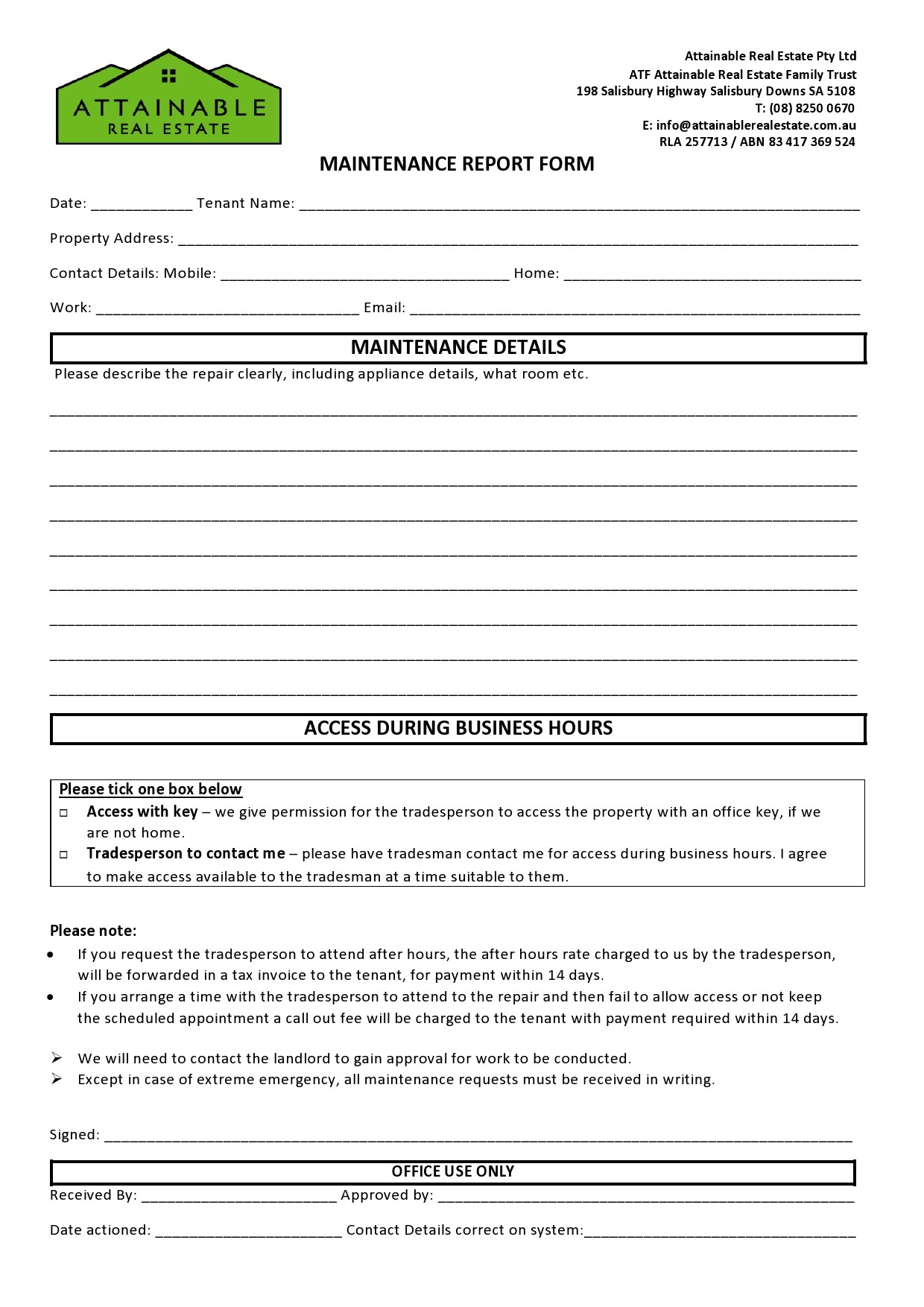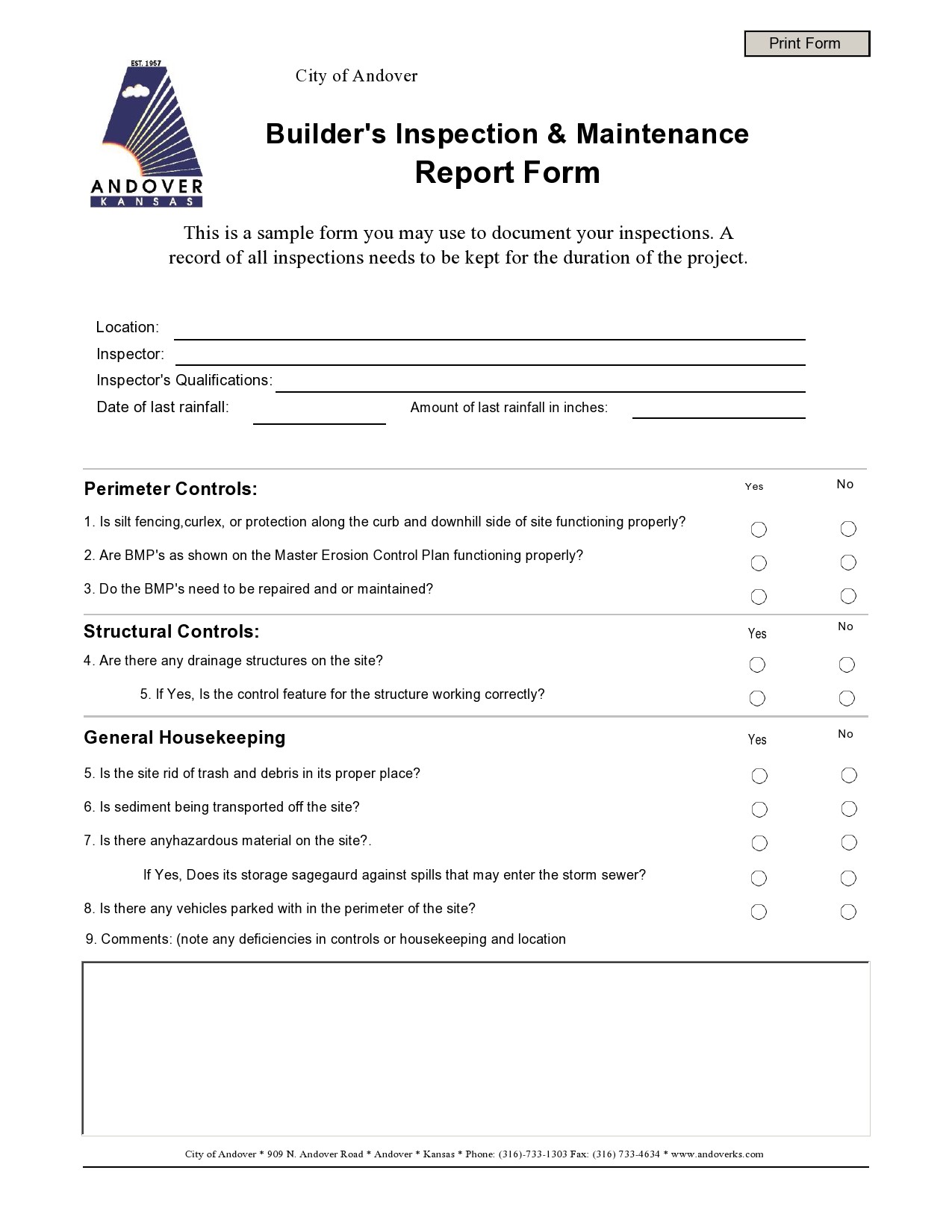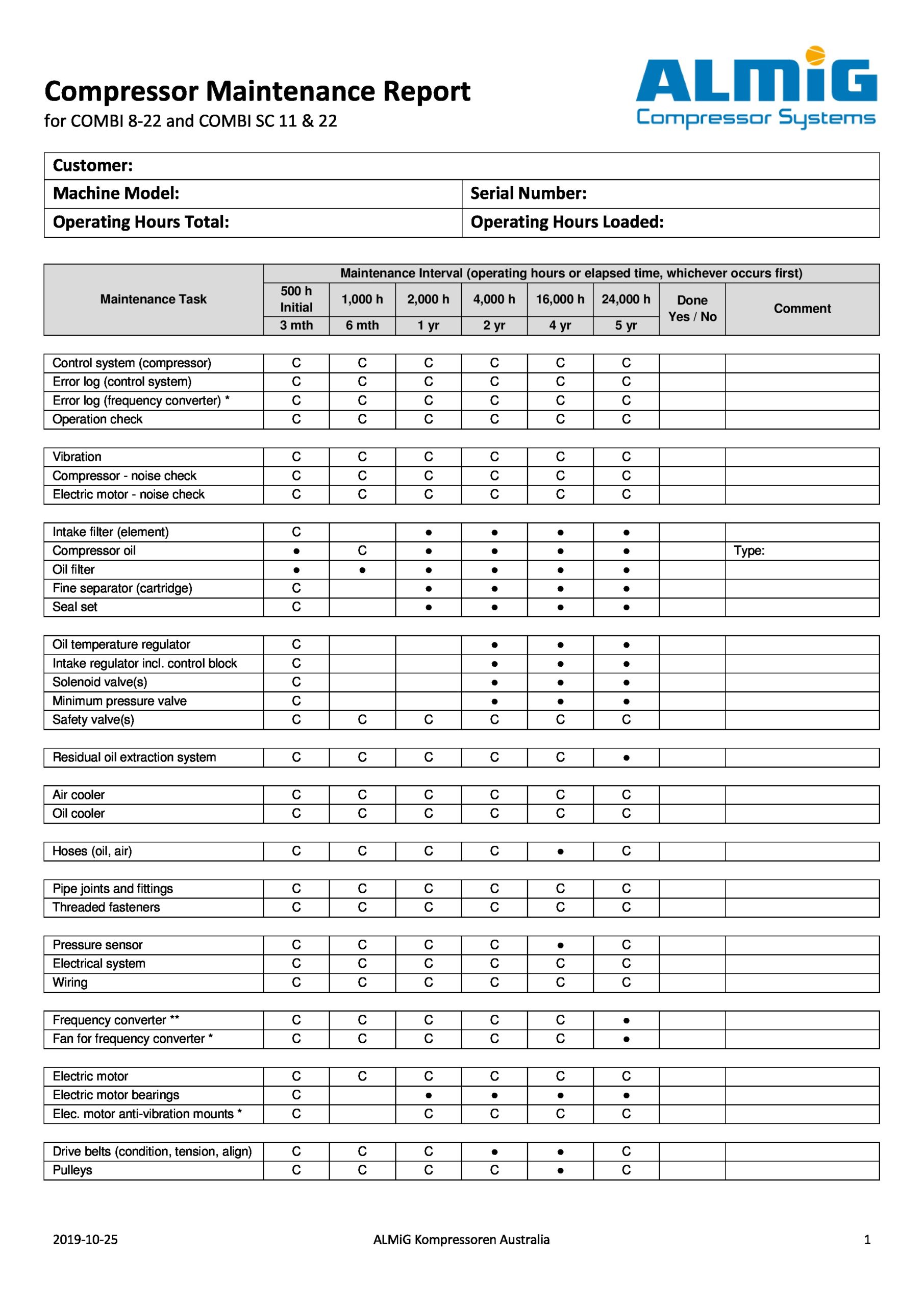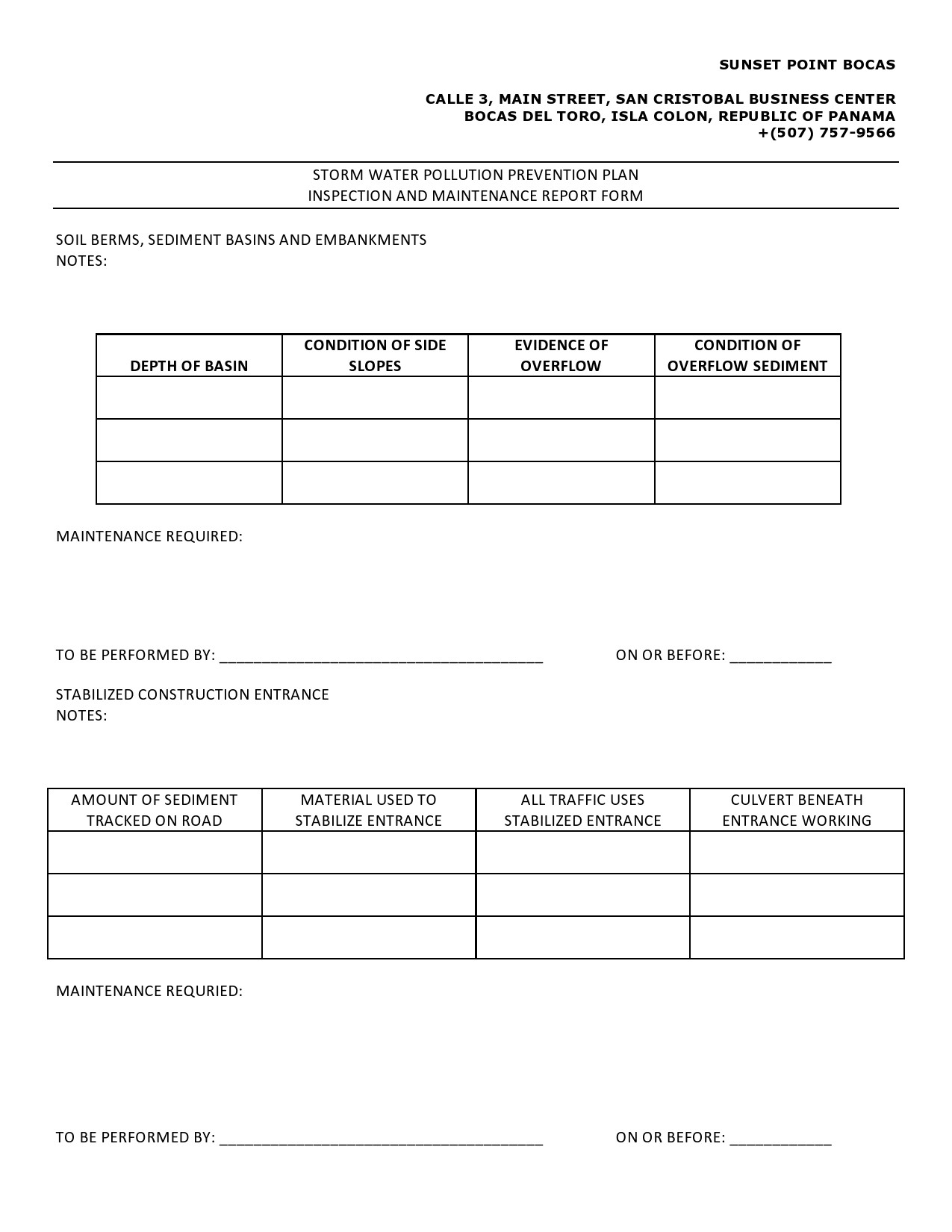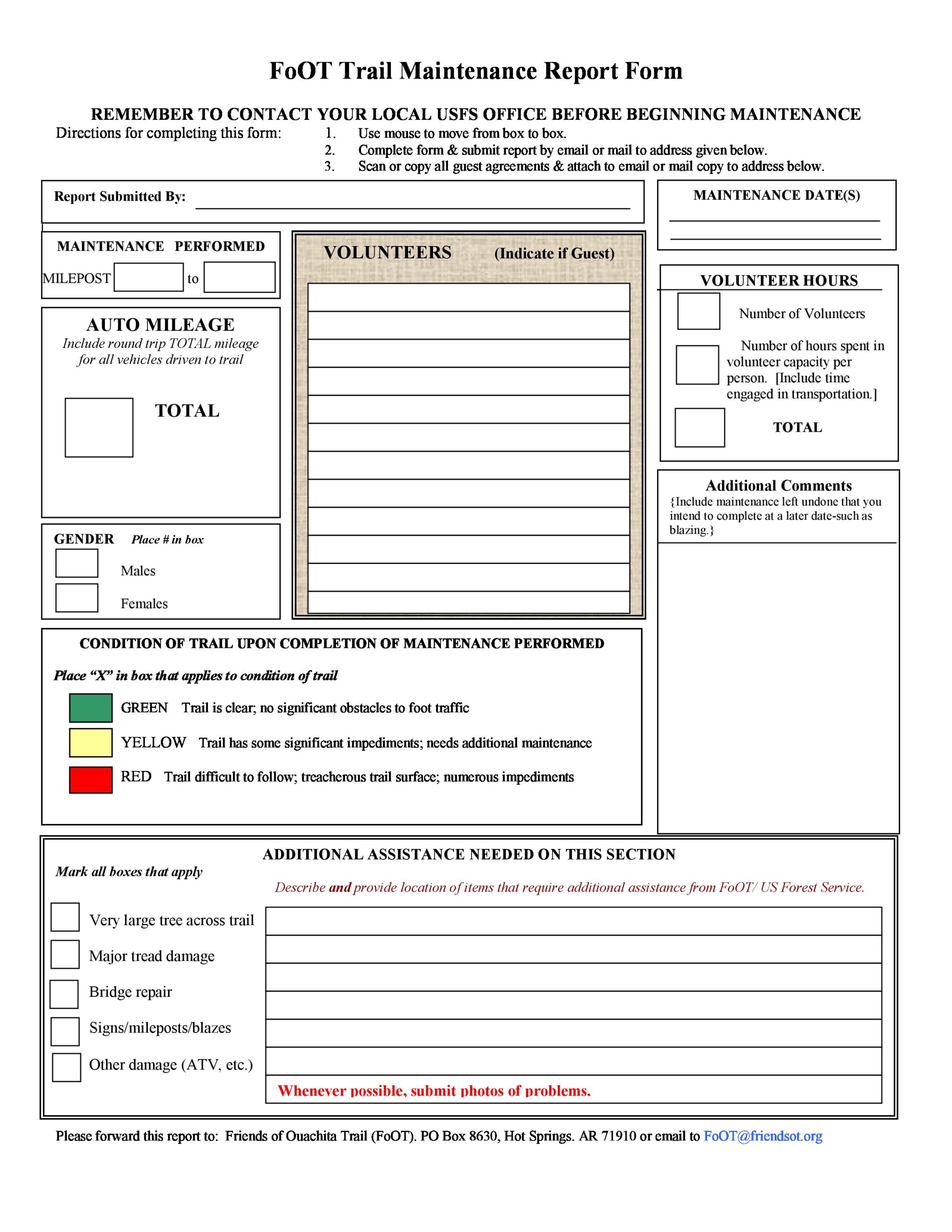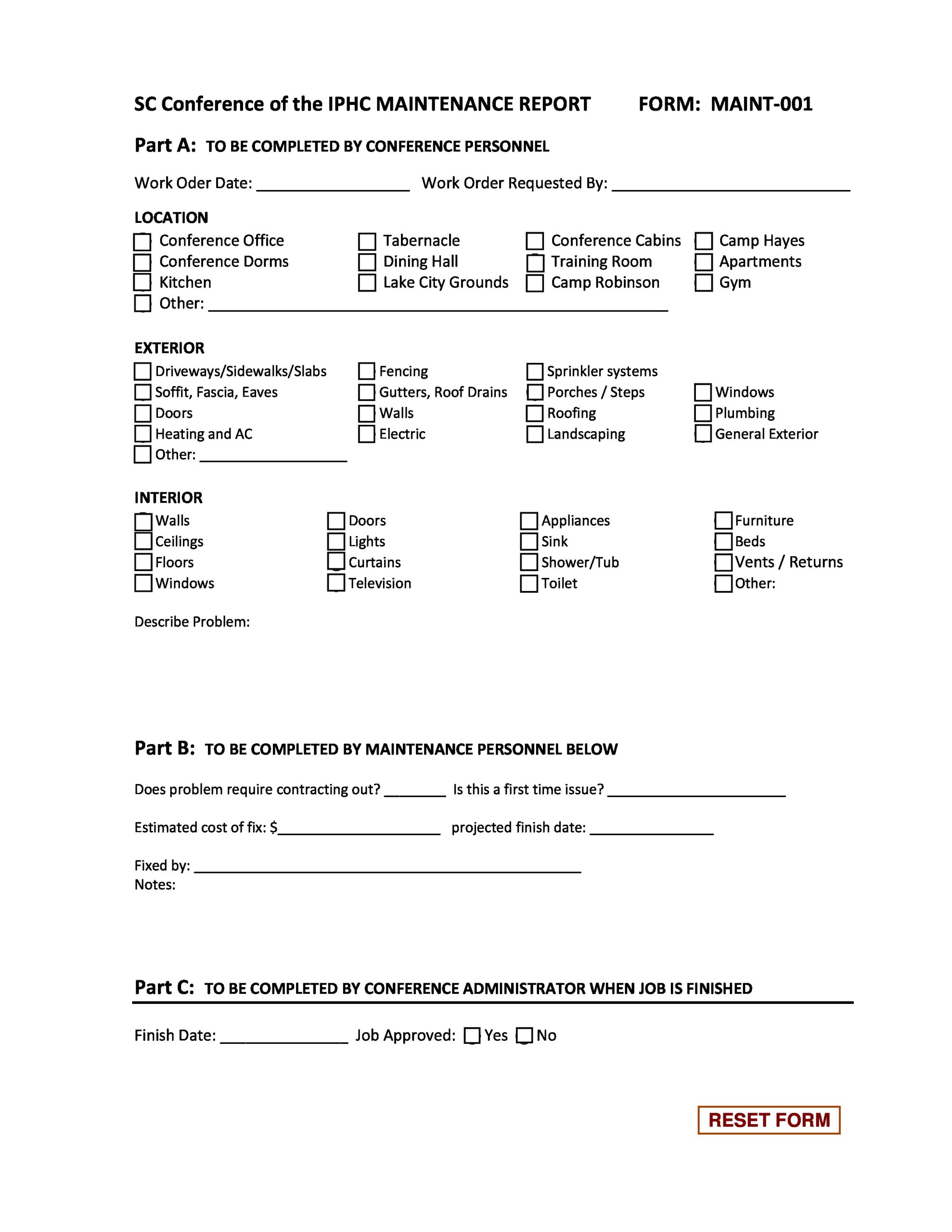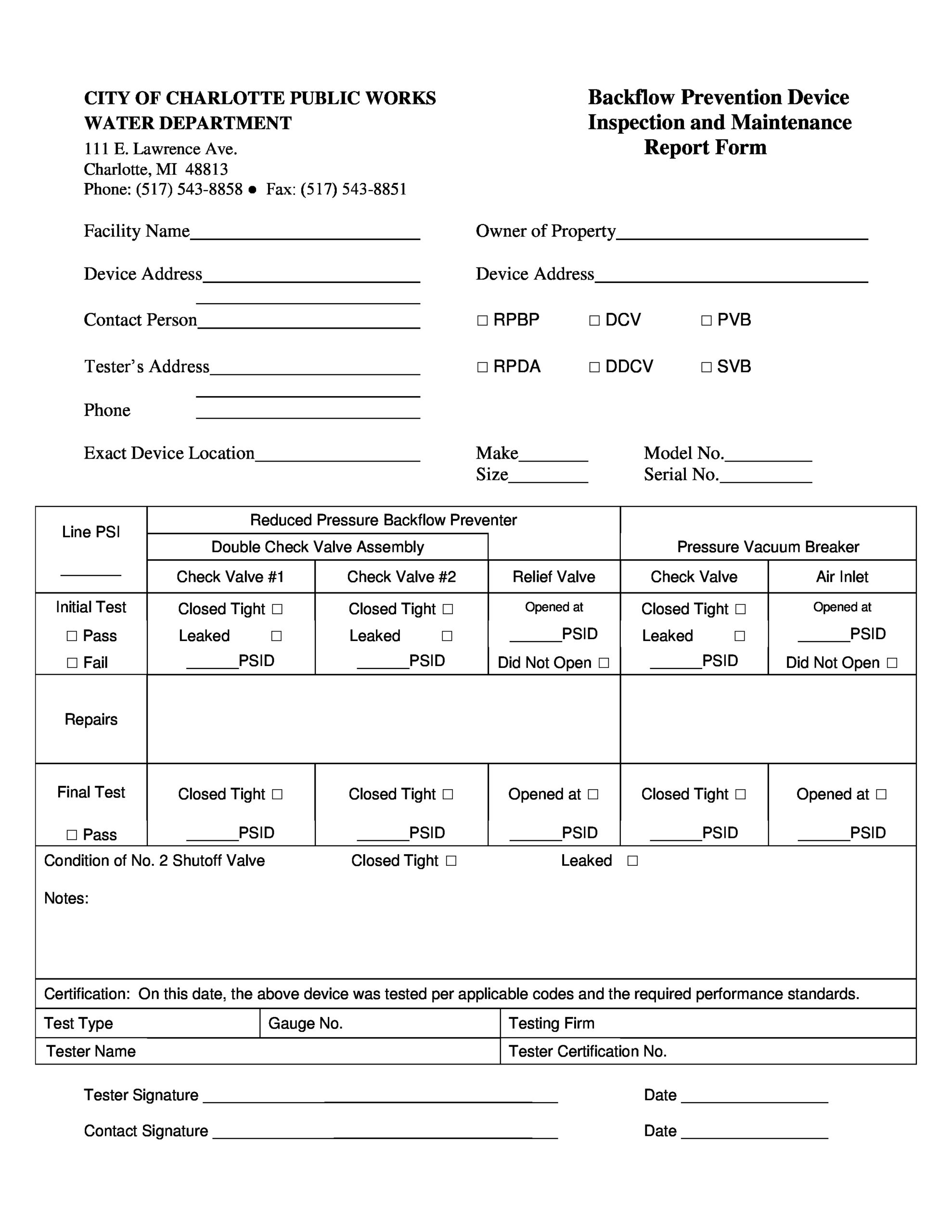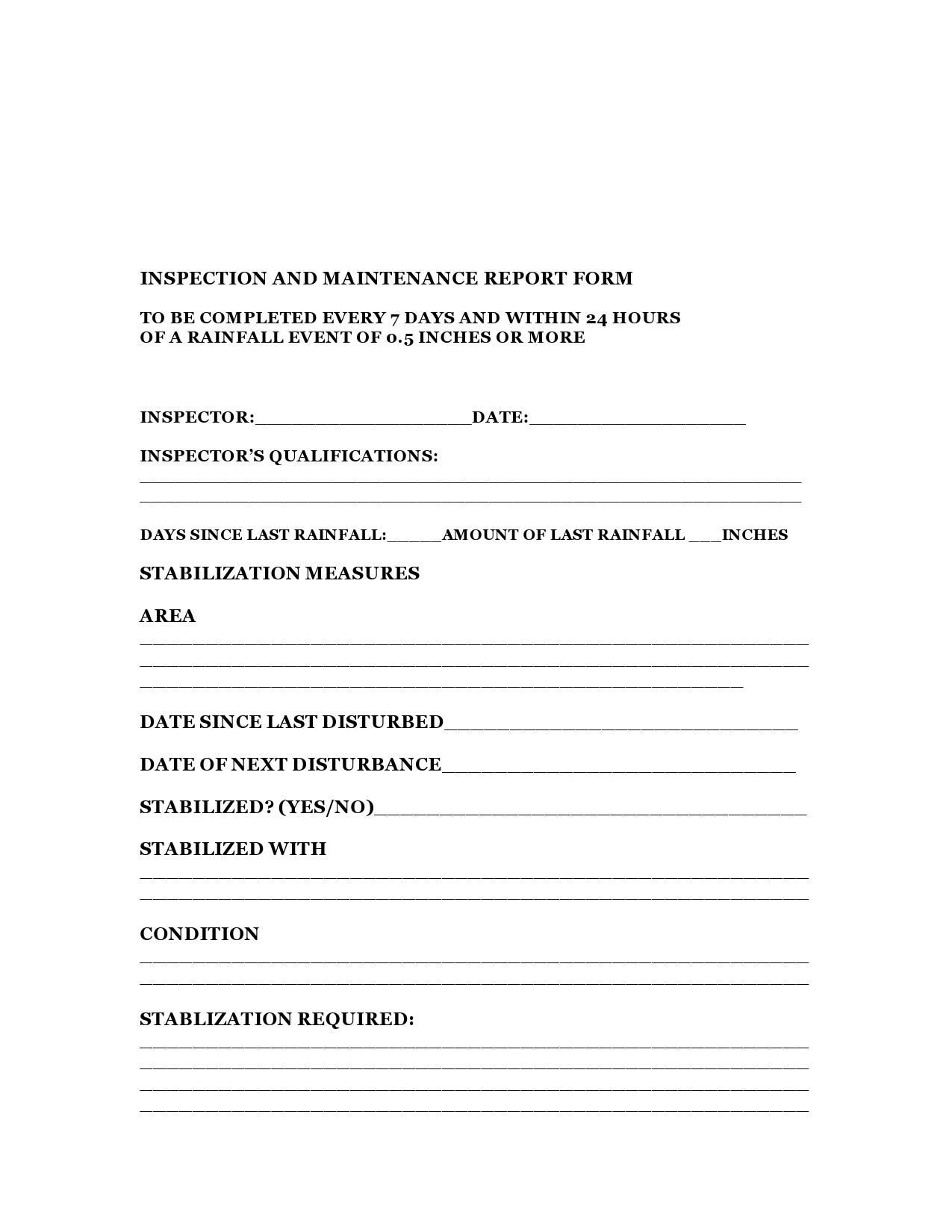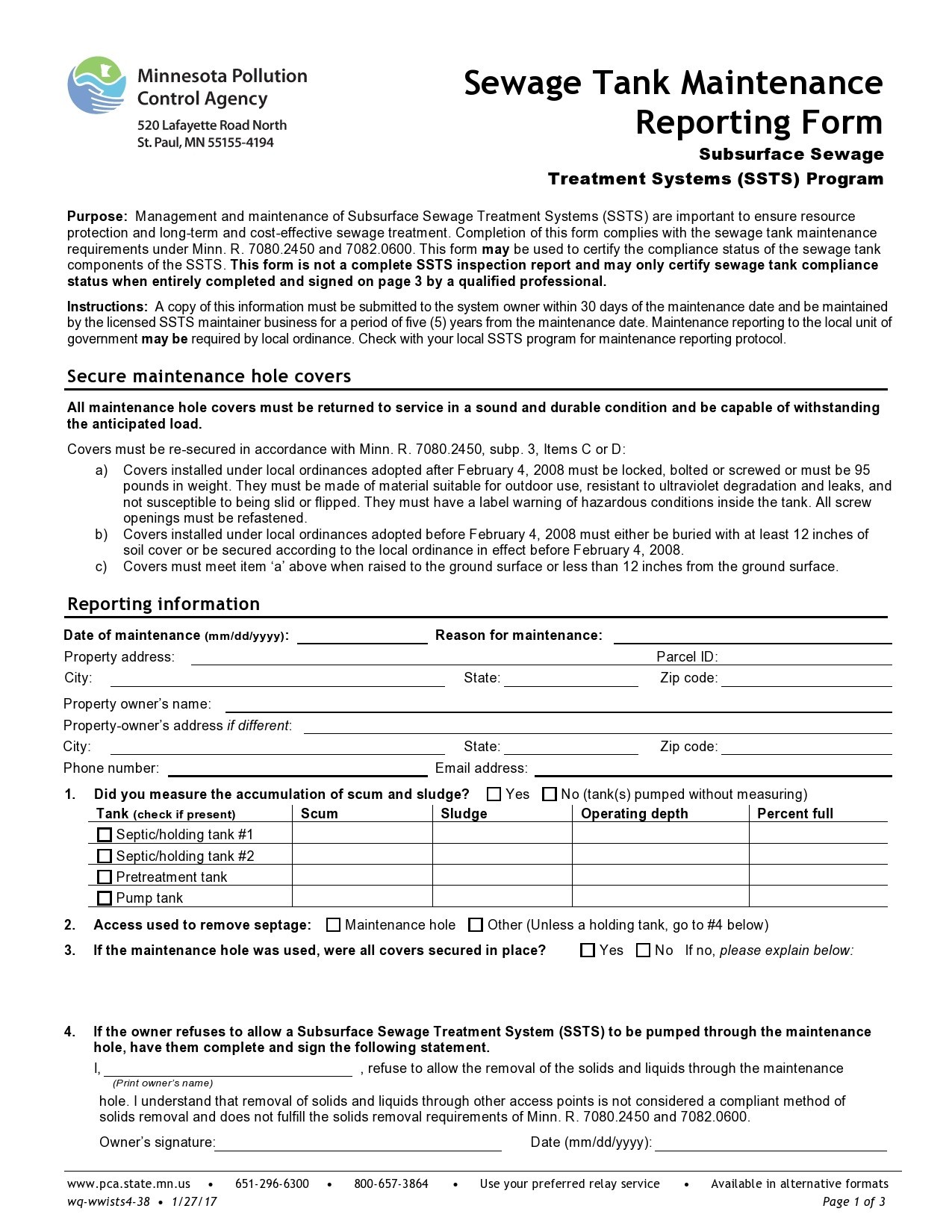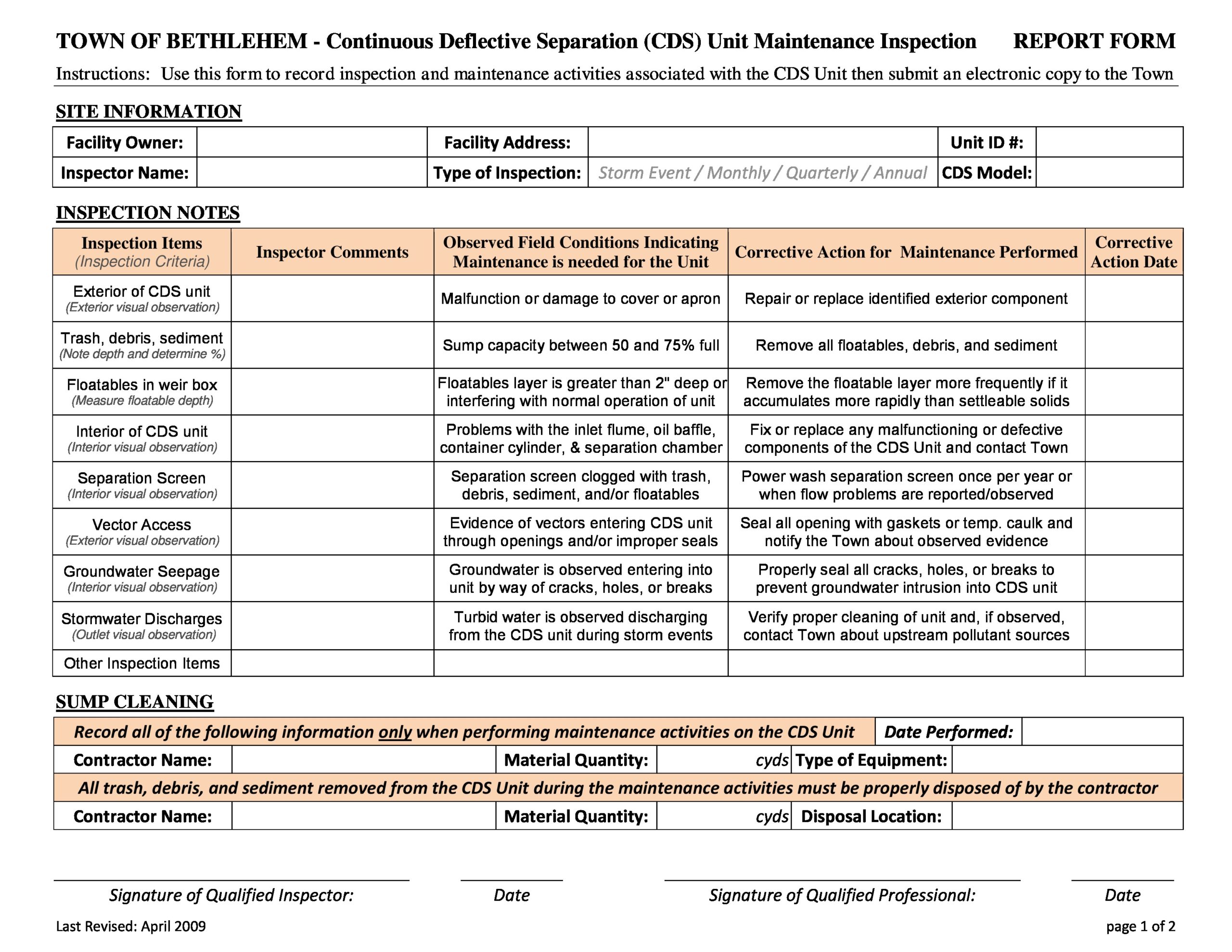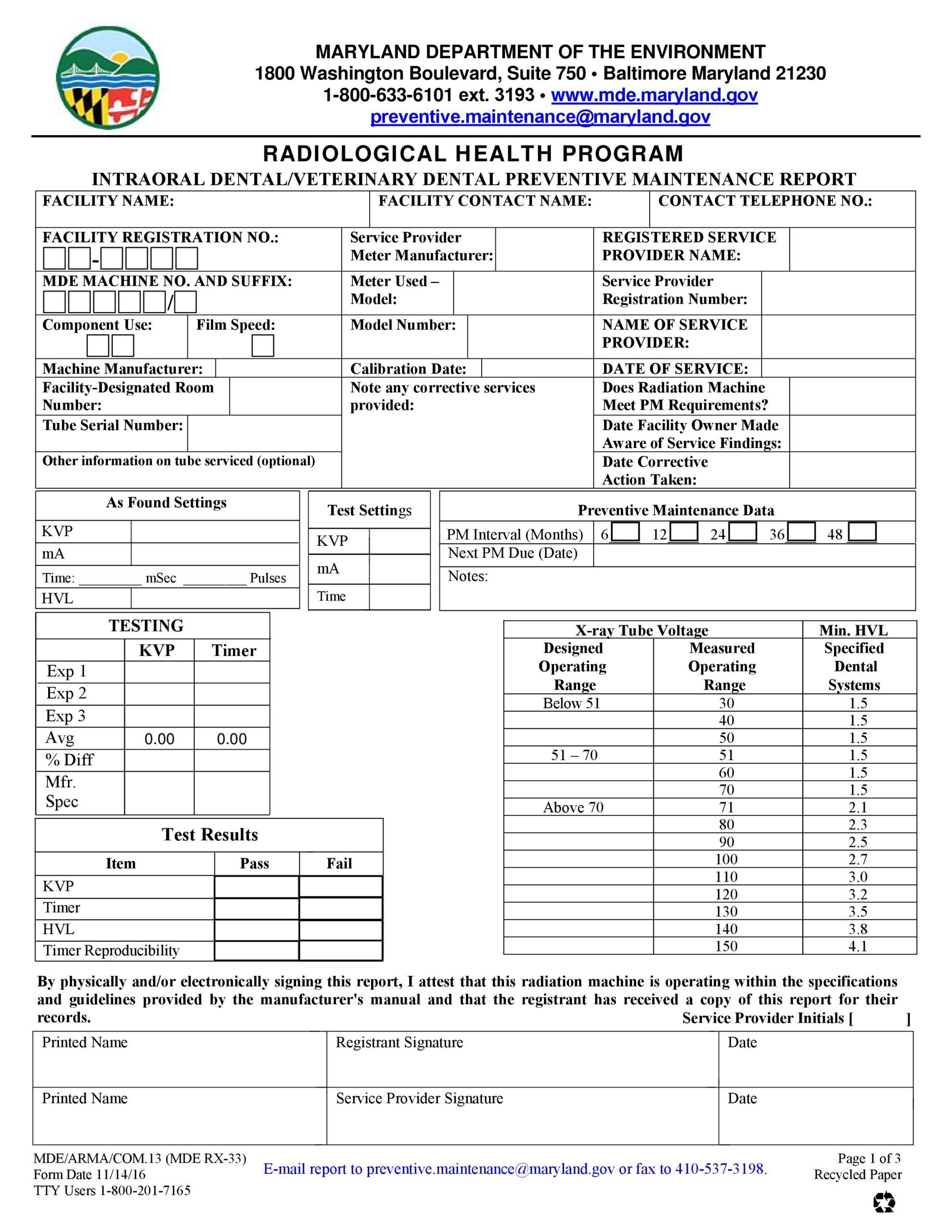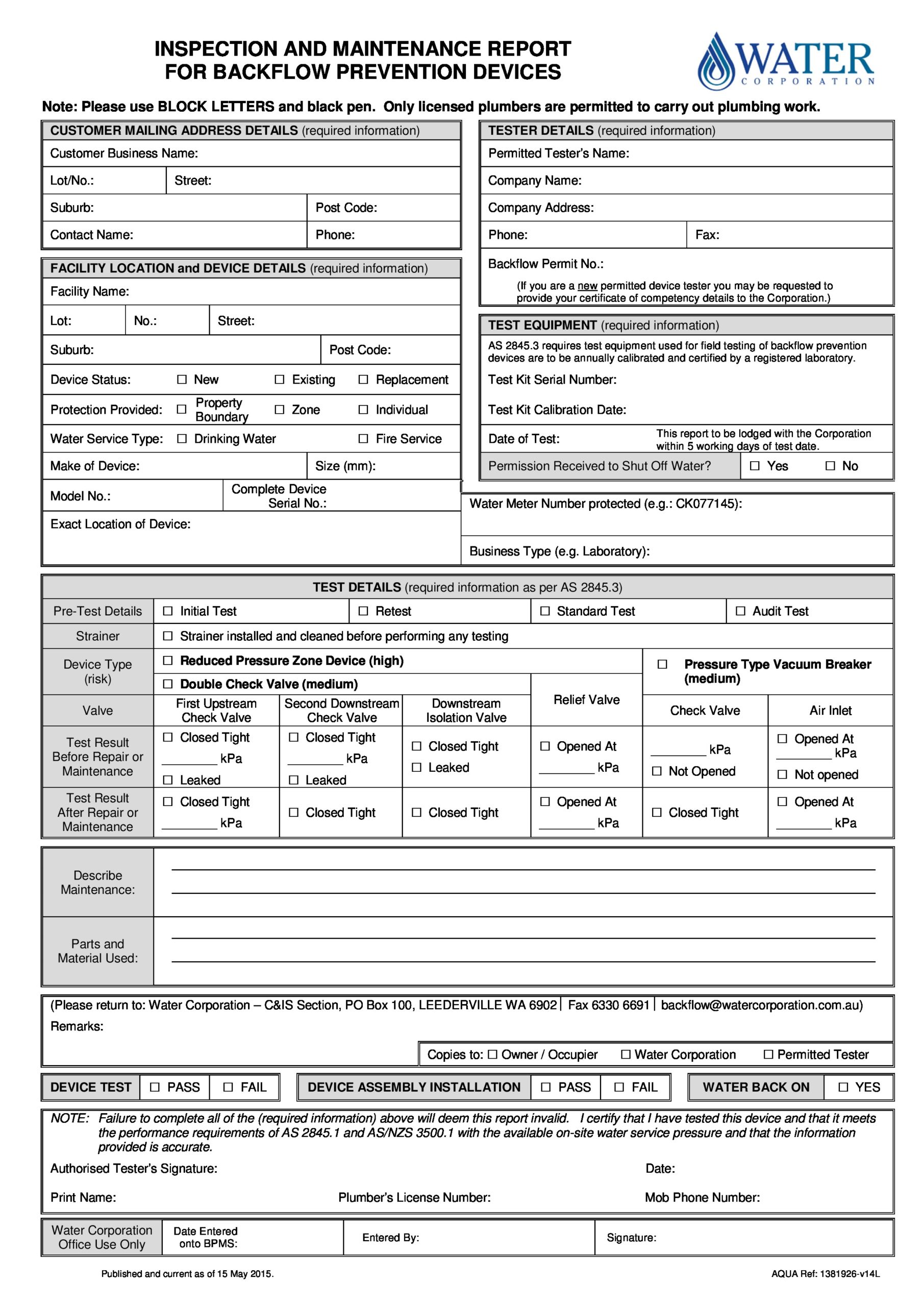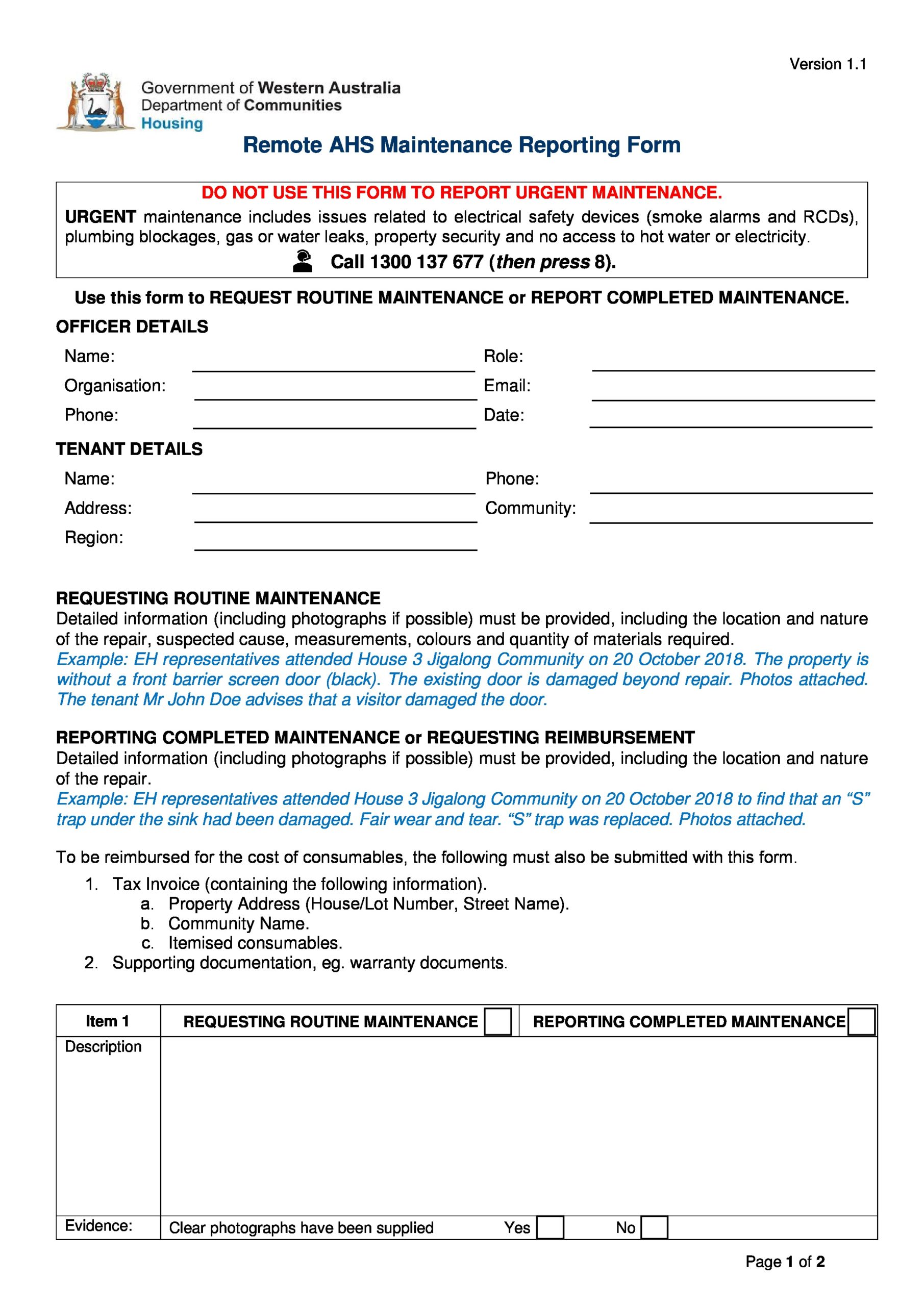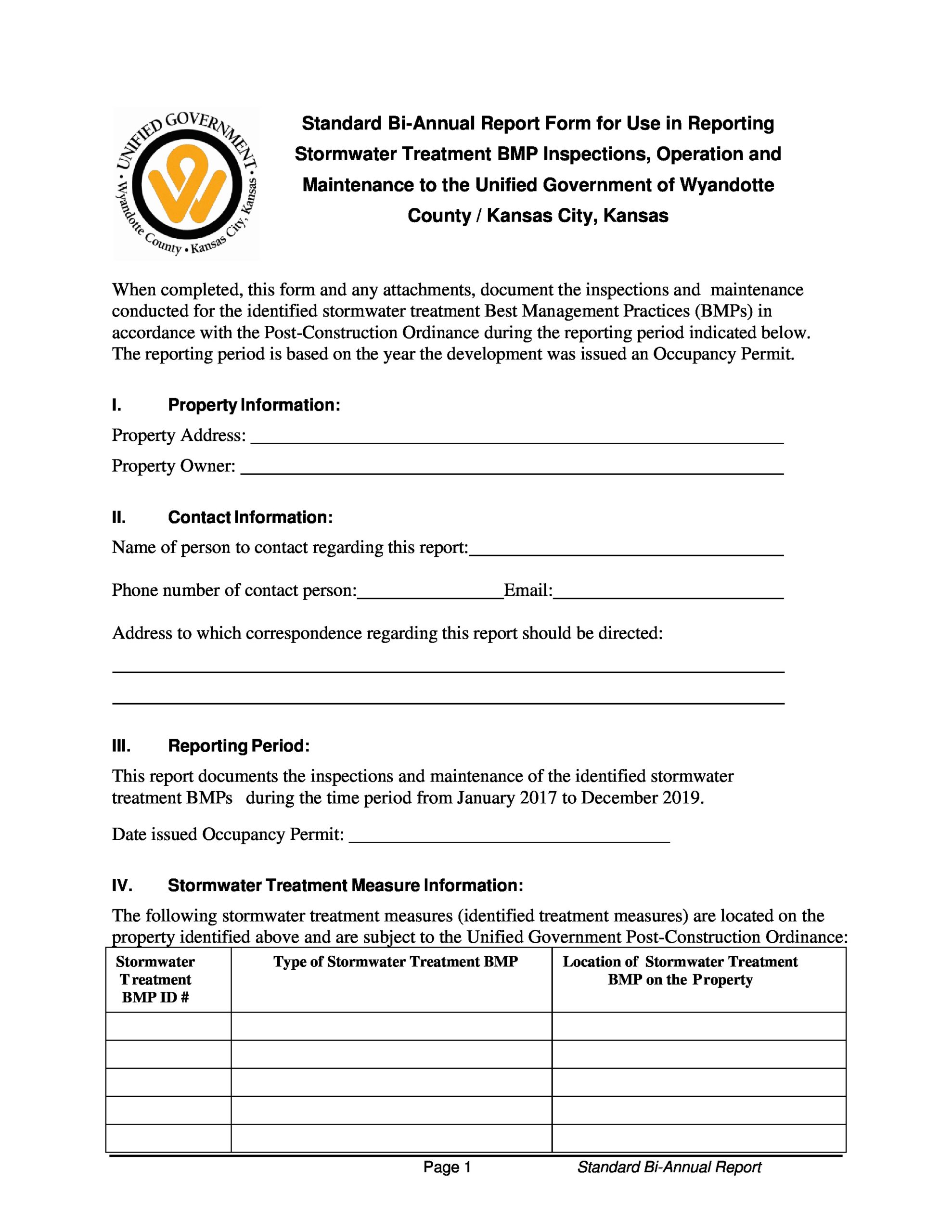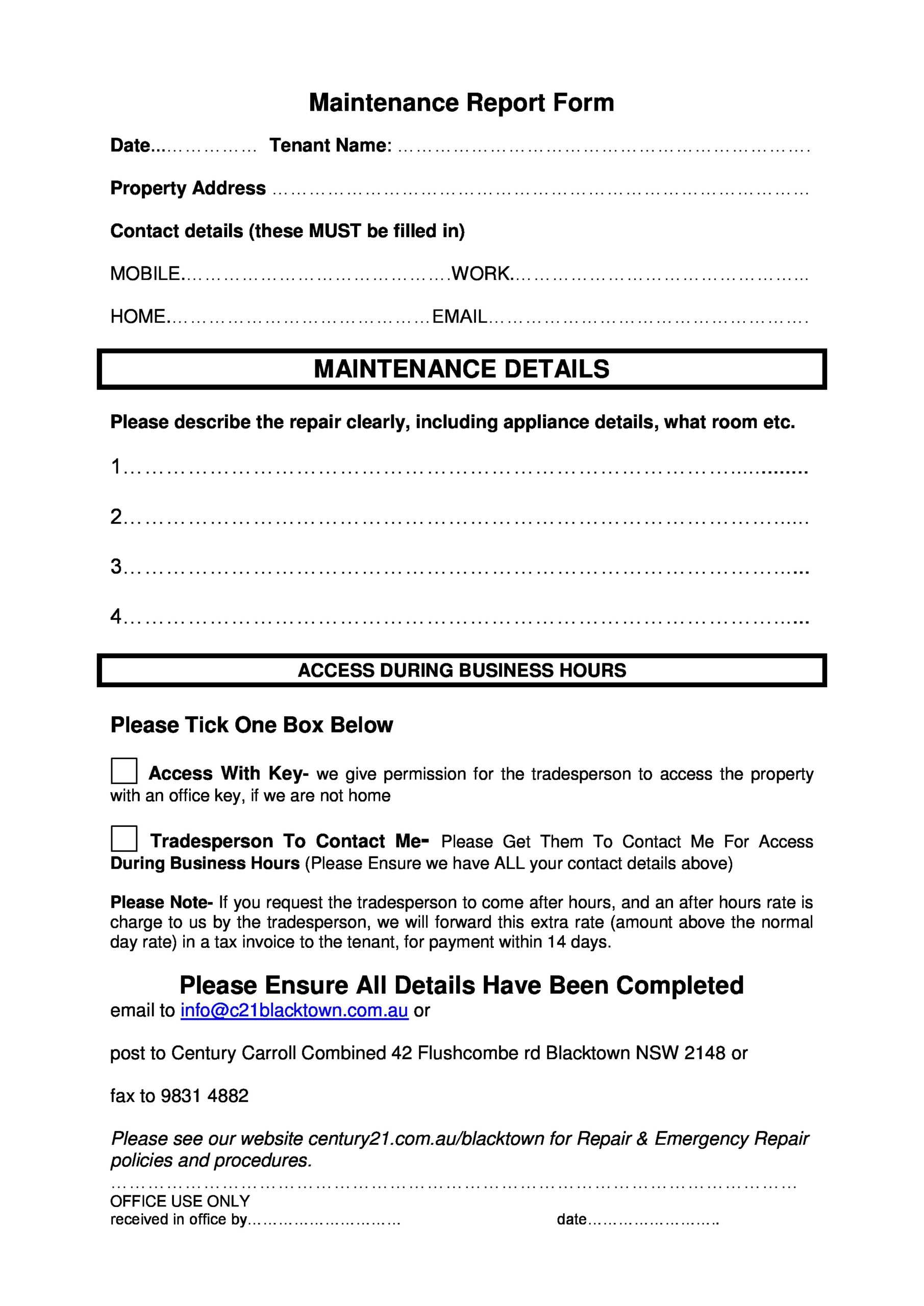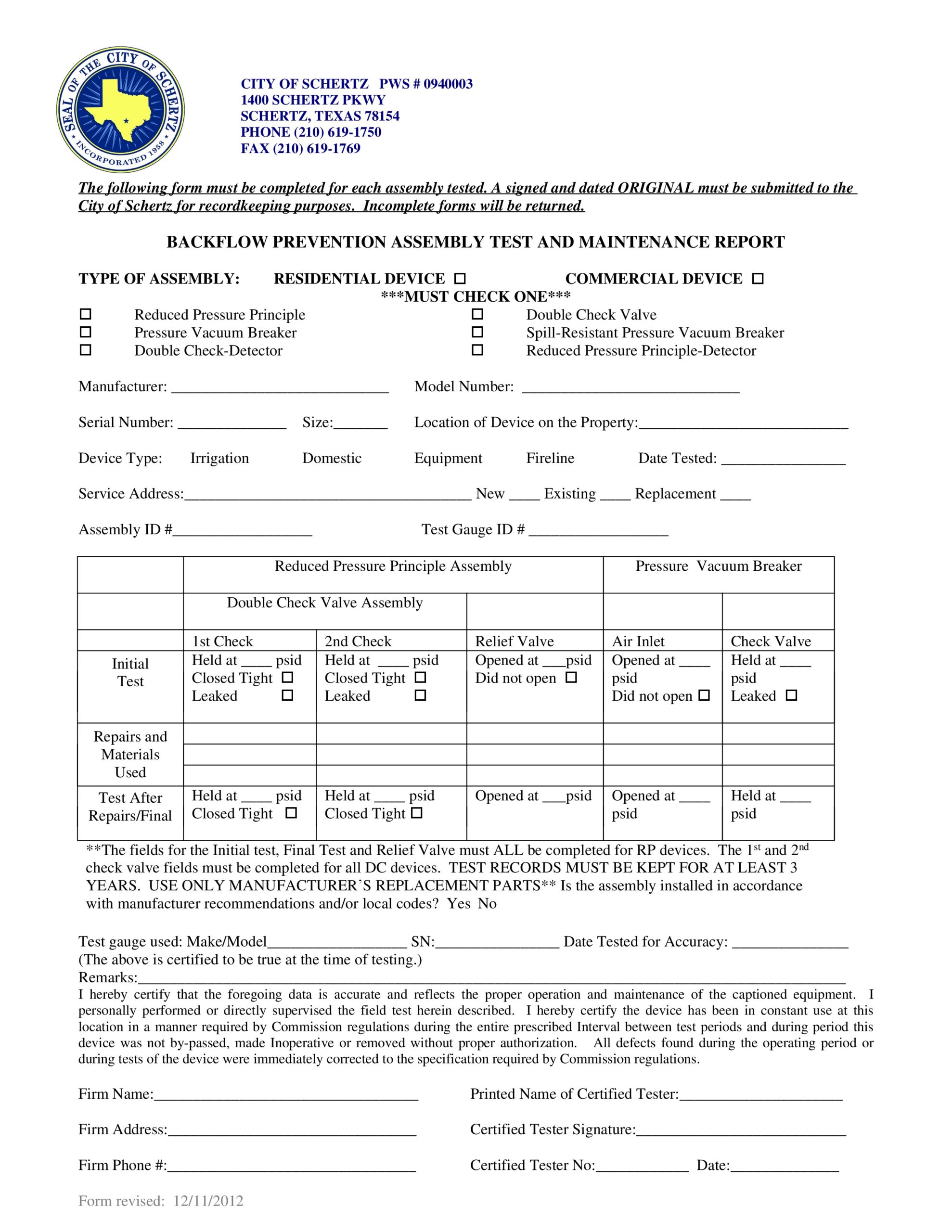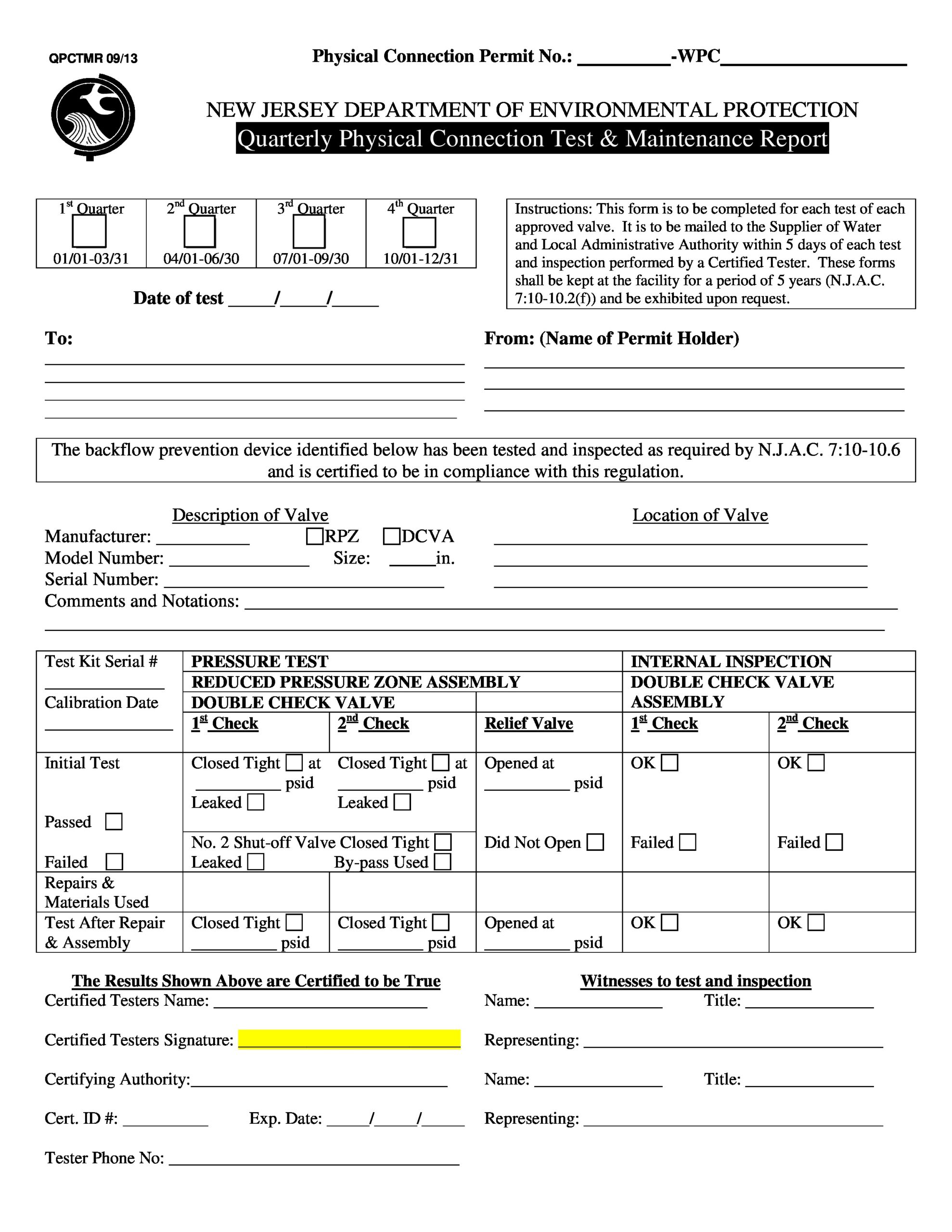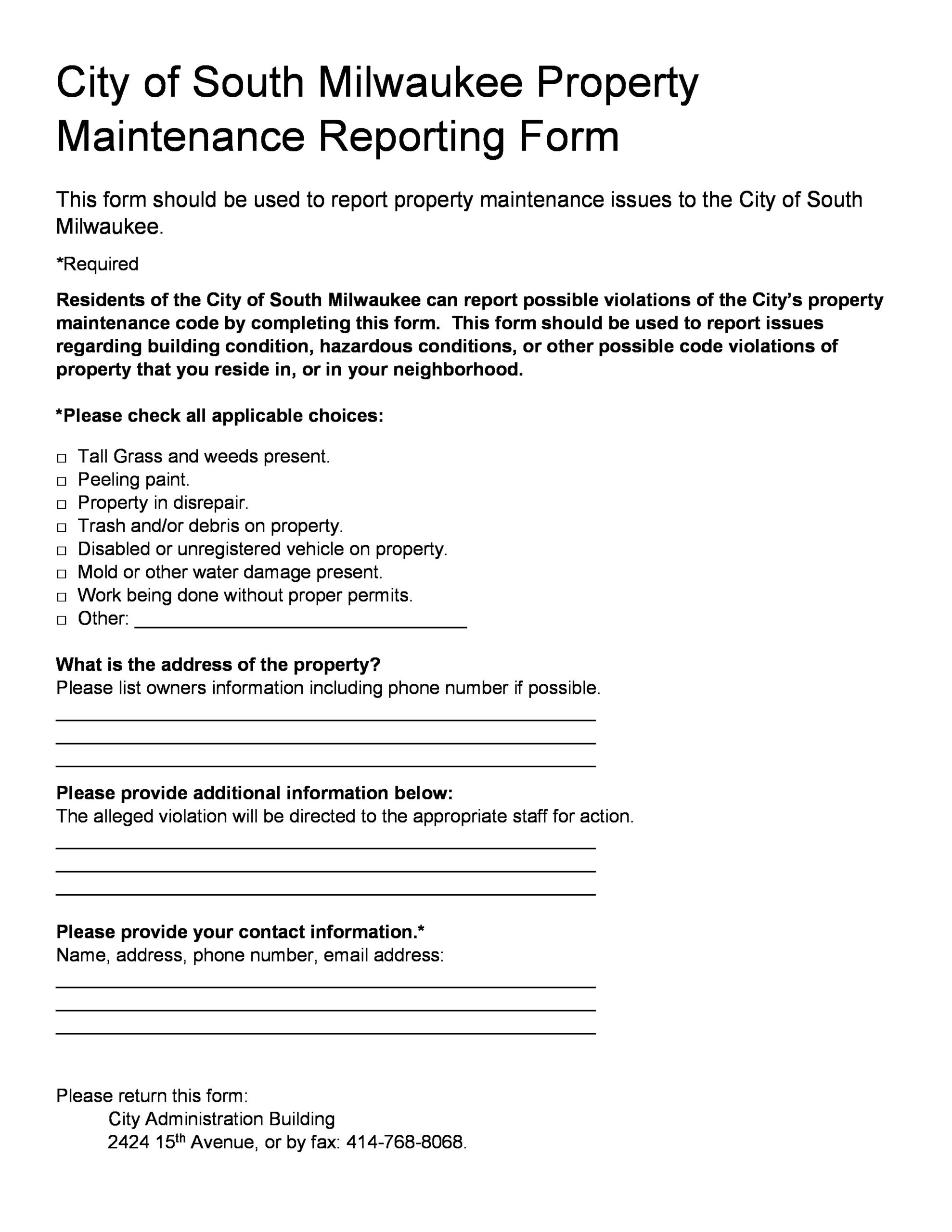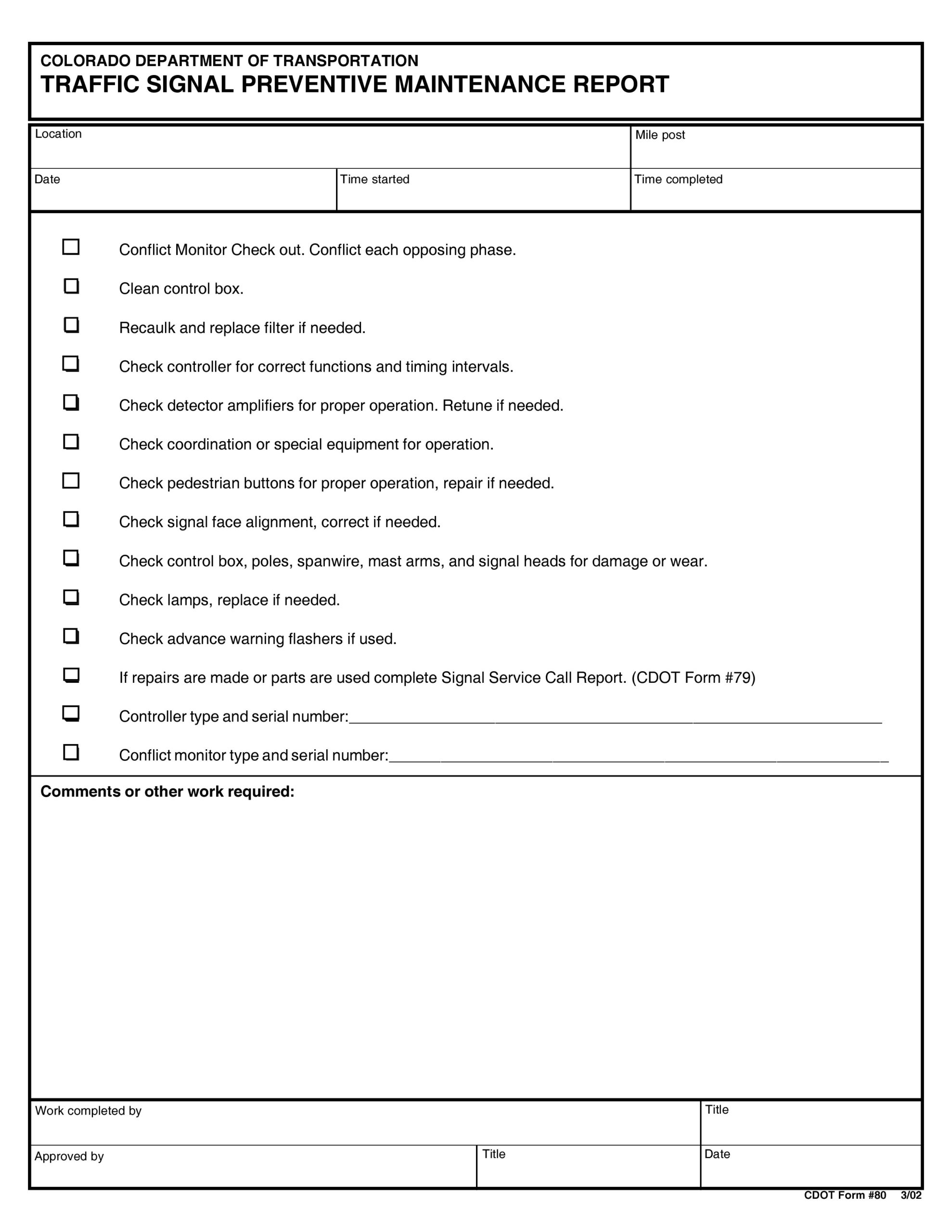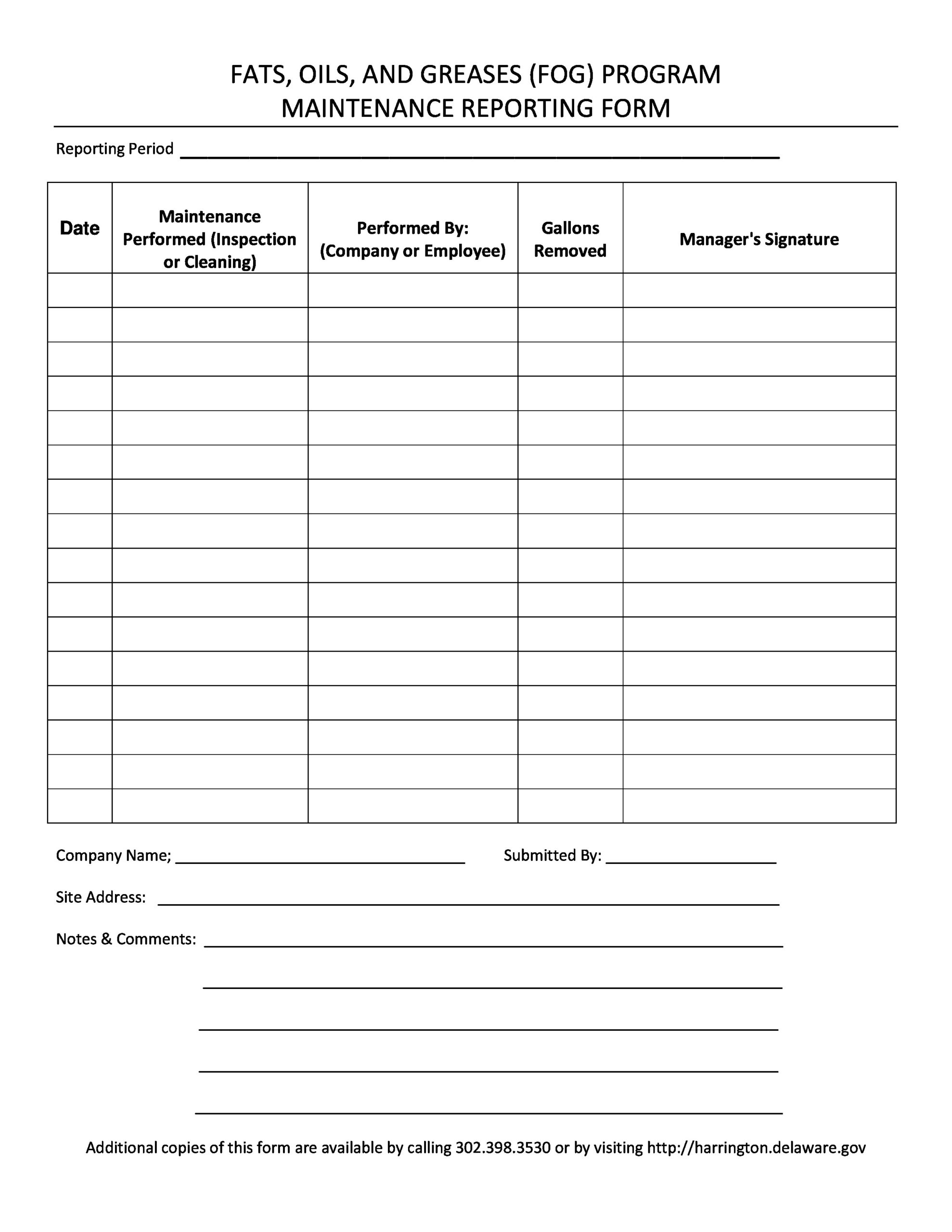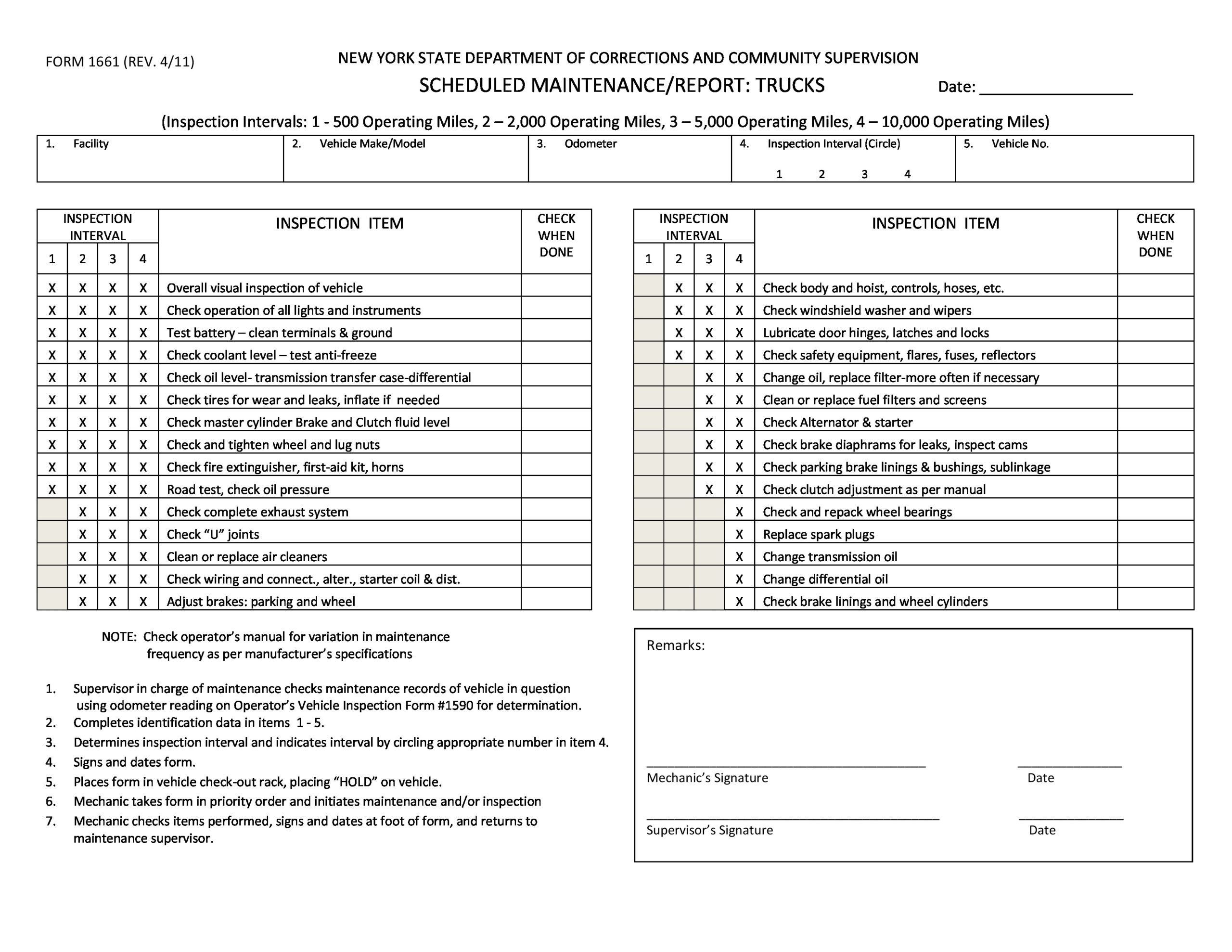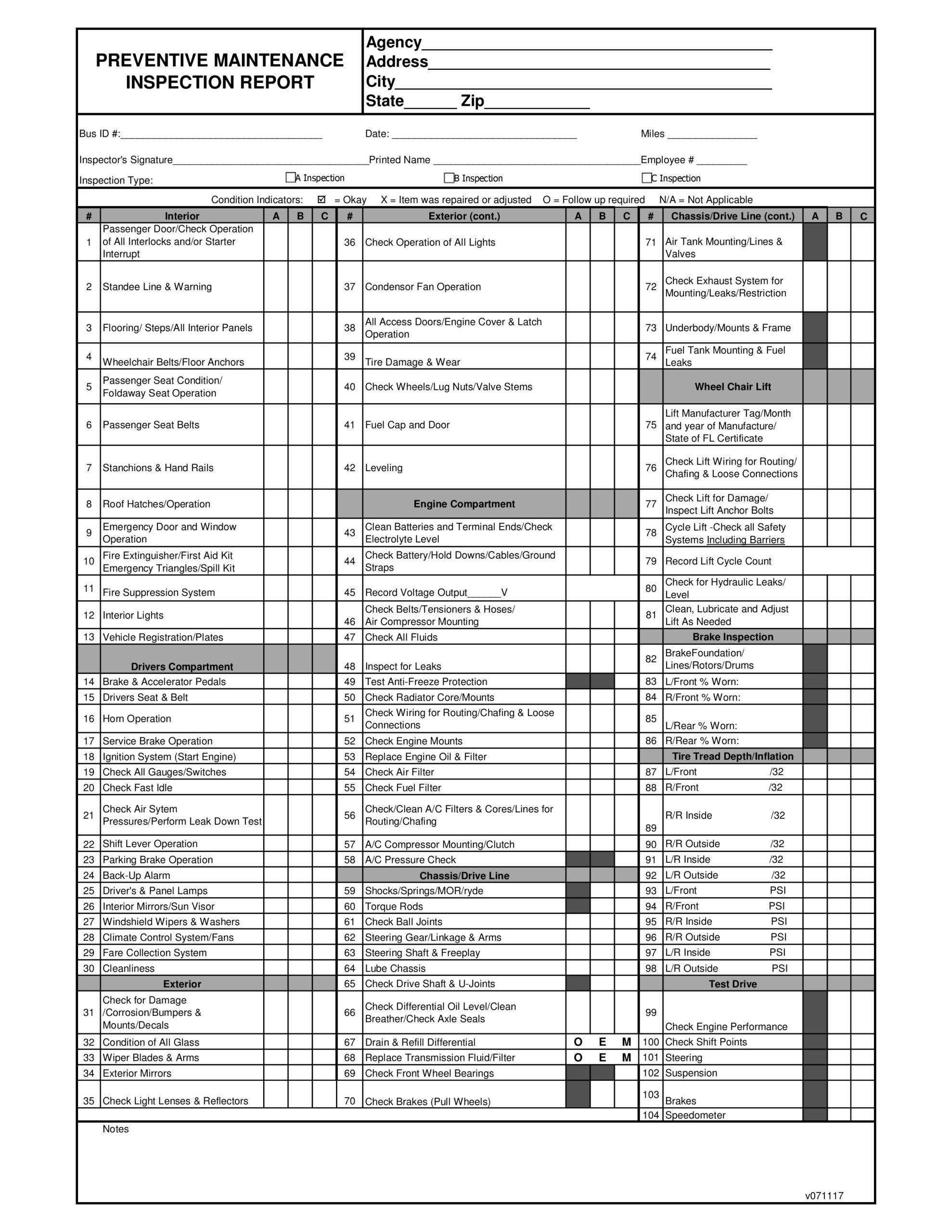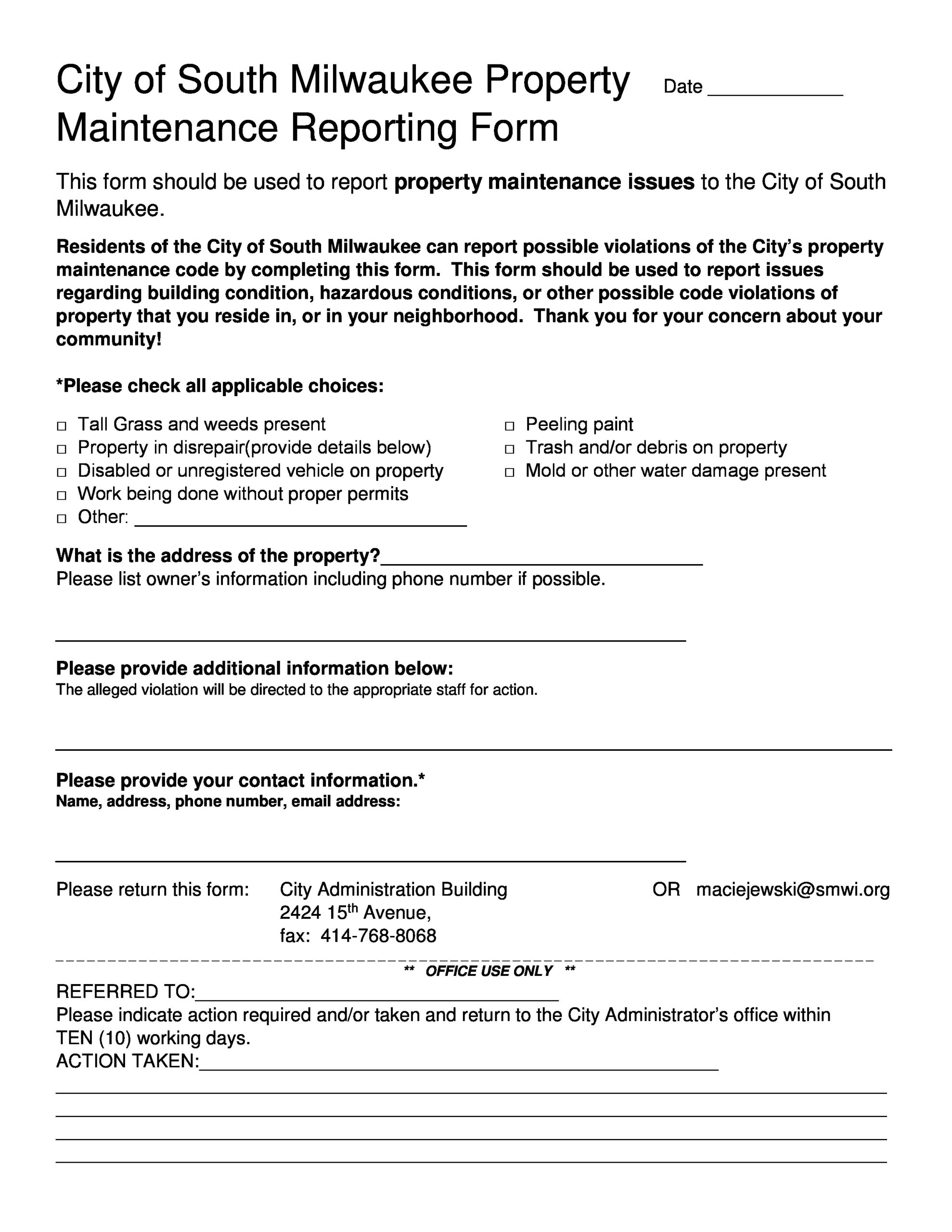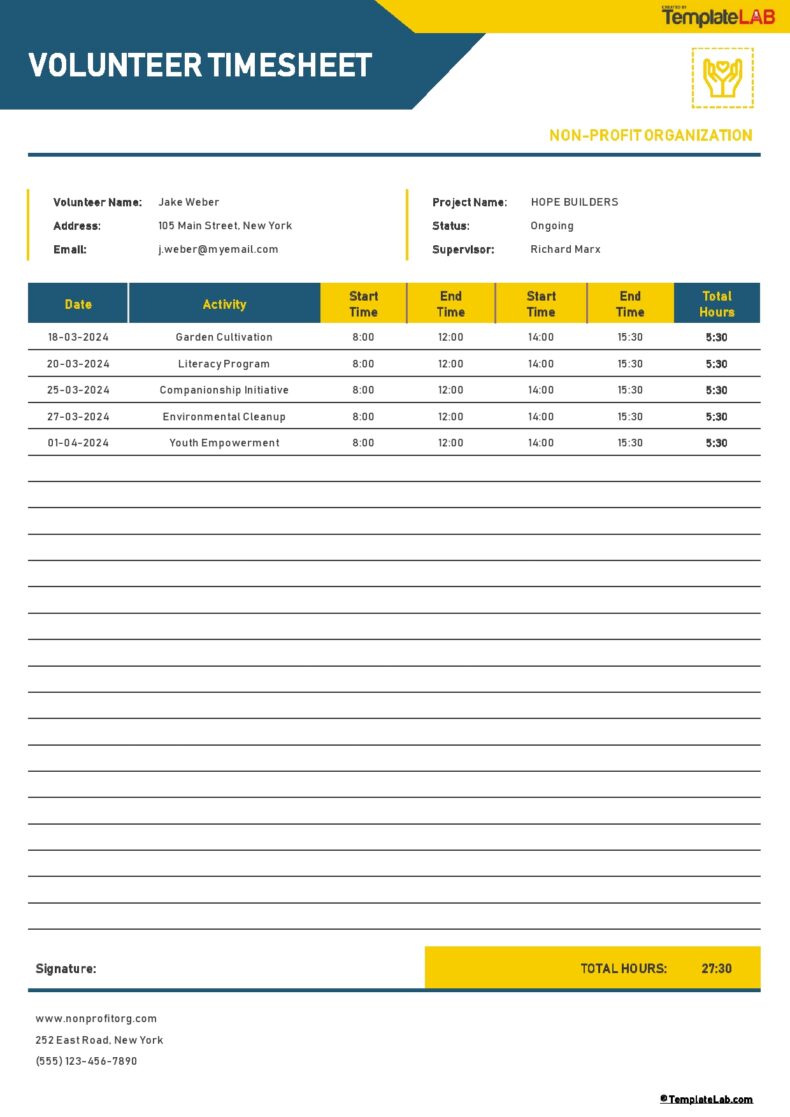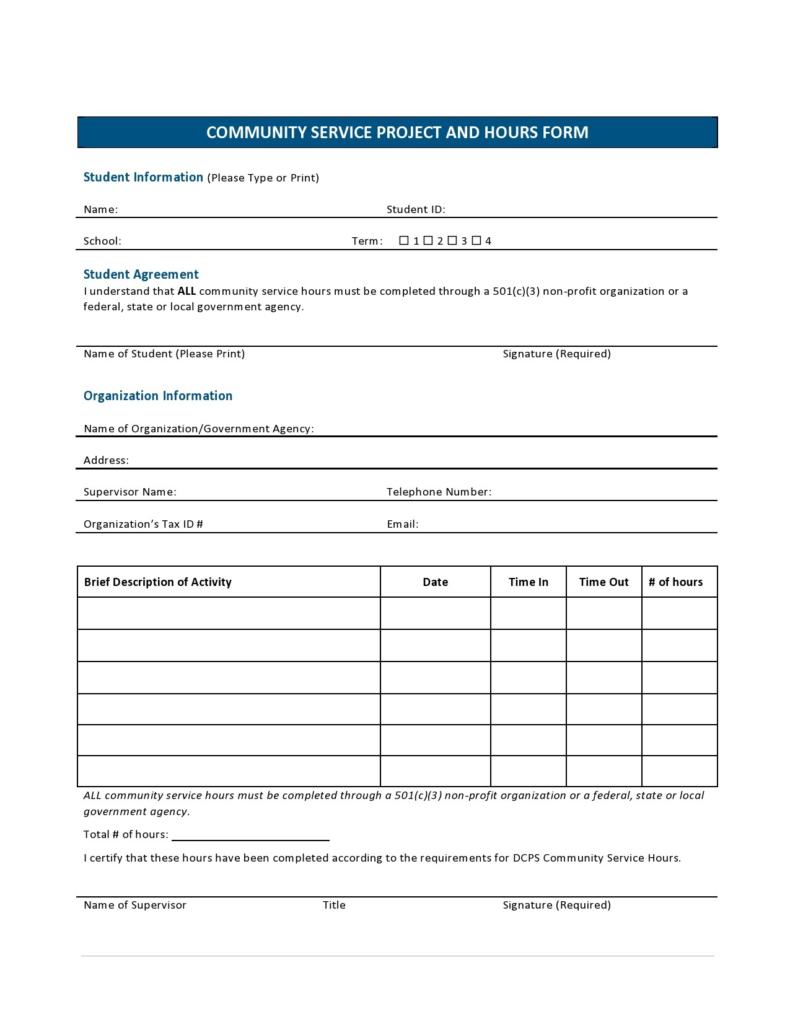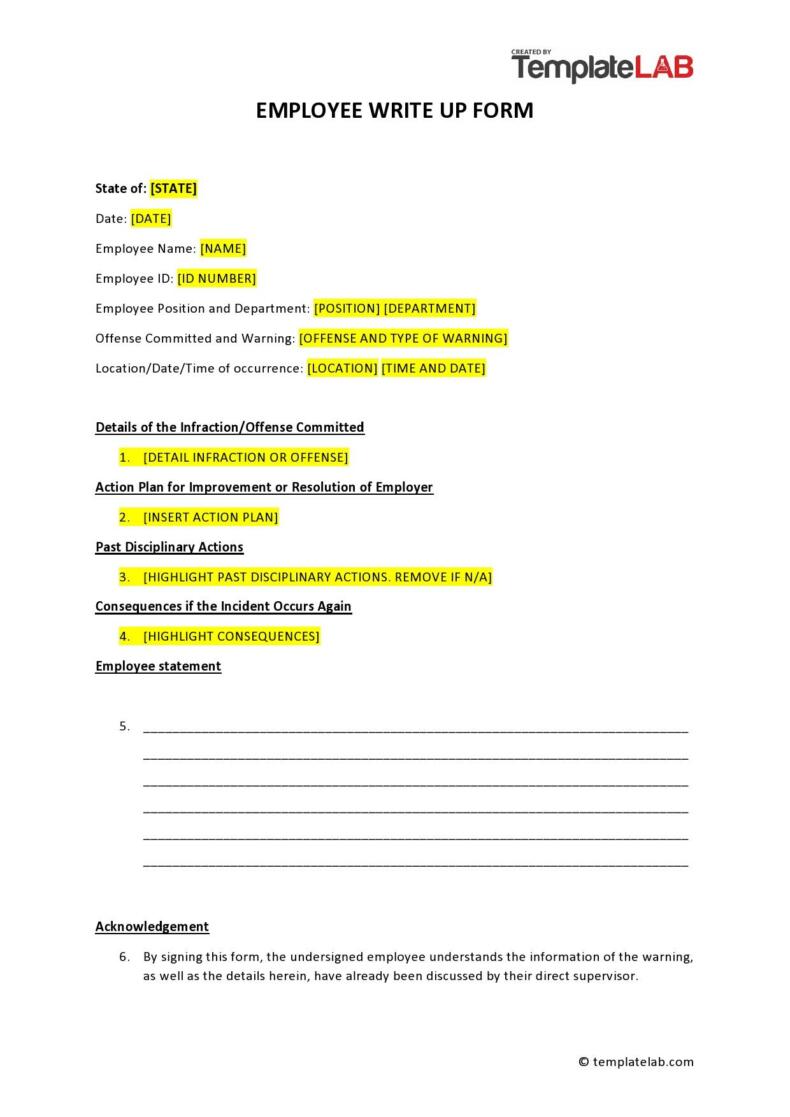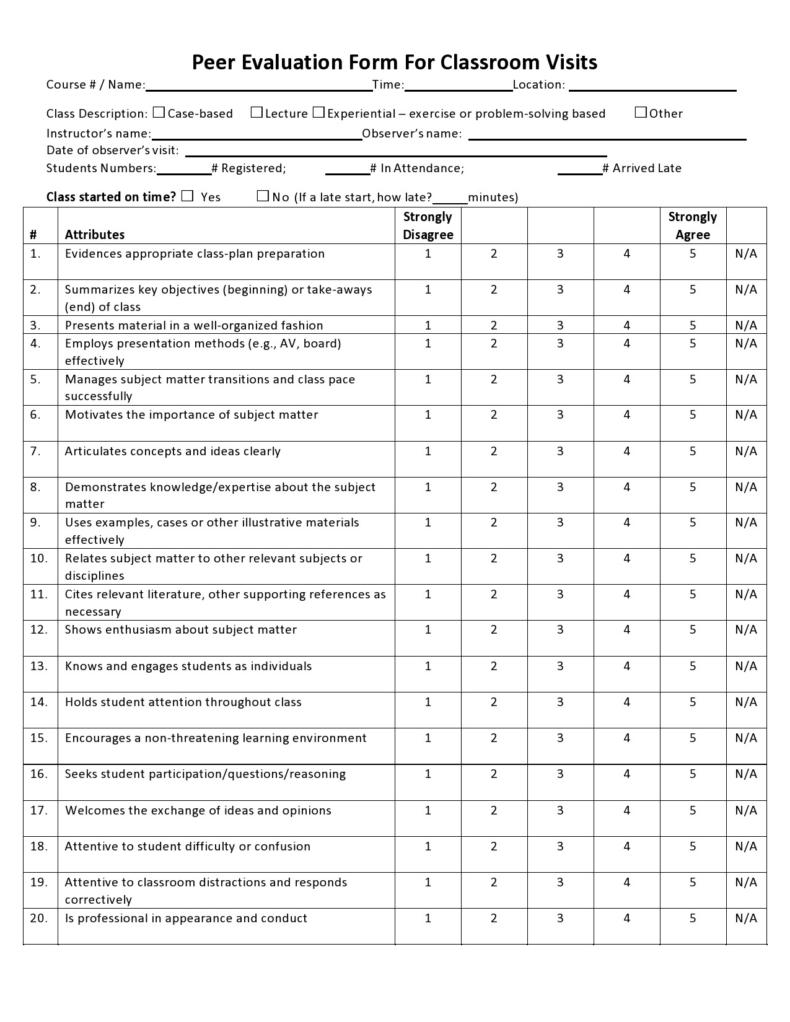In our daily lives, there are many things that need maintenance to keep them functioning smoothly. Even in the confines of home, we have appliances and cars maintained regularly so they won’t fail us while running or incur any damage. In companies, especially the big ones, you need more maintenance in your equipment. For this, you have to rely on other people to perform the checking. Later, these people will provide a maintenance report form.
Table of Contents
Maintenance Report Forms
The importance of a maintenance report form for equipment
A maintenance report form is one of the main tools used by maintenance personnel to document maintenance inspections on equipment. The report involves a continuous process of checking, servicing, and repairing operating equipment to make sure that businesses operate smoothly without unwanted interruptions.
To accurately track the records of actions done for quality and safety purposes, you can use a maintenance report template. Here are some benefits of using such a form:
- It helps maintain reliability
This ensures that operating equipment is always made available as needed and in working condition. - It helps ensure safety
Regular checkups can prevent unexpected risks to the individuals involved in doing repairs. - It improves efficiency
The early identification of defects and their immediate repairs can save the company both money and time in the long run. - It promotes good recordkeeping
The regular documentation of equipment repair and diagnostics helps you identify broader trends while supporting investigations in the future.
Maintenance Report Templates
How to make a maintenance report form?
A maintenance report form is a written document that identifies clearly how to perform a maintenance procedure. It should be both detailed and specific enough so that any qualified technician who has never performed the job can do it successfully by just reading the document and following the contents. Here are the steps to consider when making this document:
- Plan what you want to place in the form first
Before starting a large job, the maintenance planner should meet with all the personnel of the team the last time they performed the same job. The planner would then write down the steps how they remember them. This serves as a rough plan that forms the outline of the next project. - Include photographs
This step is very important for several reasons. Even very well-written plans can still get misunderstood or misread but adding photographs shows facts. If you have the personnel and equipment, recording the procedure on video will be even better.
Supervisors aren’t the best choice for this assignment because they need to supervise. If the reliability engineer isn’t available, either the clerk or the scheduler can fill the position. You can even enlist an employee to assign to restricted duty. - Write things down
It should be the task of the maintenance planner to jot down the actions taken step-by-step starting with the equipment’s safe lockout. For this, the planner should assume that he’s writing the document for a person who doesn’t know anything about the plant and the equipment.
The written procedure should have enough accuracy enough so that the “imaginary person” can complete the job successfully guided only by the maintenance report form. As the planner takes notes, he should also consider not just what is being currently done but also find ways to improve things.
This may include ways to do the job more smoothly and efficiently in the future. The planner should also take note of the man-hours associated with each of the steps from start to finish. - Create a complete list of parts
Those who would read the report as a guide need a complete list of all the parts. The list should be as complete as possible, down to the grades and numbers of the bolts, nuts, washers, and anything else needed. - Create complete lists for experts, supplies, and tools
If there is a need for special stands or jigs for the job, you should take note of these in your the maintenance report form, including where you store them. As for supplies, take note of any material shortages. The same thing goes for personnel.
If you needed factory reps or consultants the last time, chances are, you will need them again the next time. - Include diagrams and drawings
You should make available any tool, image or document to help the technician perform his job.
After you have compiled and gathered all of the essential information, you’re now ready to make the maintenance report form template. If possible, you should do this in the presence of the whole team while memories are still fresh in their minds.
Work Order Templates
Analyzing the maintenance report form
In whatever situation, you need to identify problem equipment regularly using a maintenance or work order template. This can help you determine what needs fixing and what still works. Here are the steps you need when analyzing the report:
- The maintenance costs of each piece of equipment
You can use the report to get an estimation of the total maintenance costs. Look at the planned and unplanned maintenance costs for the previous year. Don’t look at short periods as the cost values could get skewed if some equipment requires heavy maintenance only during specific times of the year. Find out which piece of machinery is the most expensive to maintain. Review the cost and look for anything that seems to be out of place. Filter out such equipment on your list. - The duration of equipment downtime
Review the downtime of equipments for the previous year. There might be unavailability of parts or some of the maintenance personnel got promoted to other jobs. For such reasons, downtime for some equipment may seem higher because it took a long time to repair them. Filter out these pieces of equipment from the list. - The history of maintenance work requests and complaints
Review the reported work requests and complaints for the previous year. Look for the assets that registered many requests or complaints associated with maintenance work. - Equipment statistics
Often, you can use equipment statistics for specific purposes. But such might not be that useful if you have many types of equipment as you can’t compare their statistics. However, in the case of having similar equipment that you use in similar ways, this is when a comparison of statistics can happen. Investigate any oddities in your equipment statistics.
Repair Report Templates
After obtaining a list of equipment having problems more than usual, you should further check by finding the causes of these problems. Machines or equipment that frequently break down could fail for reasons like:
- Nearing the end of life
Theoretically, you can keep equipment running through constant maintenance but at some point in time, it becomes too costly to continue doing so. Maintenance can take a beating because of the equipment’s internal fatigue, non-availability of parts, insufficient maintenance skills or new equipment with better efficiency and productivity. - Poor maintenance procedures
Equipment can be badly affected if:
You don’t maintain them regularly.
You use poor-quality supplies or spare parts.
Your maintenance technicians don’t know how to do their jobs correctly.
In such cases, review the maintenance report form and check on the following:
If the maintenance personnel frequently replace the same parts or always report issues during the maintenance process when using specific parts.
If there were any missed preventive maintenance schedules.
Your work order template to ensure the proper way of following maintenance procedures.
Any equipment that falls under any of these categories needs a better plan for preventive maintenance. - Ineffective operational practices
This means that the equipment operators aren’t using your equipment correctly. Or the equipment wasn’t designed for the loads you’re subjecting it to. Some feedback from maintenance personnel may cite operator errors. This means that improving operator training may help with the problem.
Equipment considered critical or those that frequently fail even if you maintain them properly could be an indication of overloading. There may be a need to purchase new machines or make changes in operation flows to reduce peak loads. - Poorly built or designed equipment
When a machine constantly fails, it could mean that the fault is in the machine itself caused by internal flaws. If you have several similar machines that seem to have the same failures because of the same issue, it could be a sign of construction or design issues.
Research to find out if other companies using the same equipment experience the same problem. If so, you can ask the manufacturer to deal with these issues. In worst-case scenarios, you have to buy better equipment from another manufacturer. - Incorrect setup or installation
Things could go wrong if you didn’t install your equipment correctly. It might have gotten damaged during the initial setup or installation. This is almost similar to equipment with poor construction or design. In this case, however, it usually happens only to a few pieces of equipment.
Again, you can research on the issue by finding out about companies that have similar problems. Comparing equipment statistics to the manufacturer’s recommendations may also provide clues. You should check such equipment and re-install if needed.

